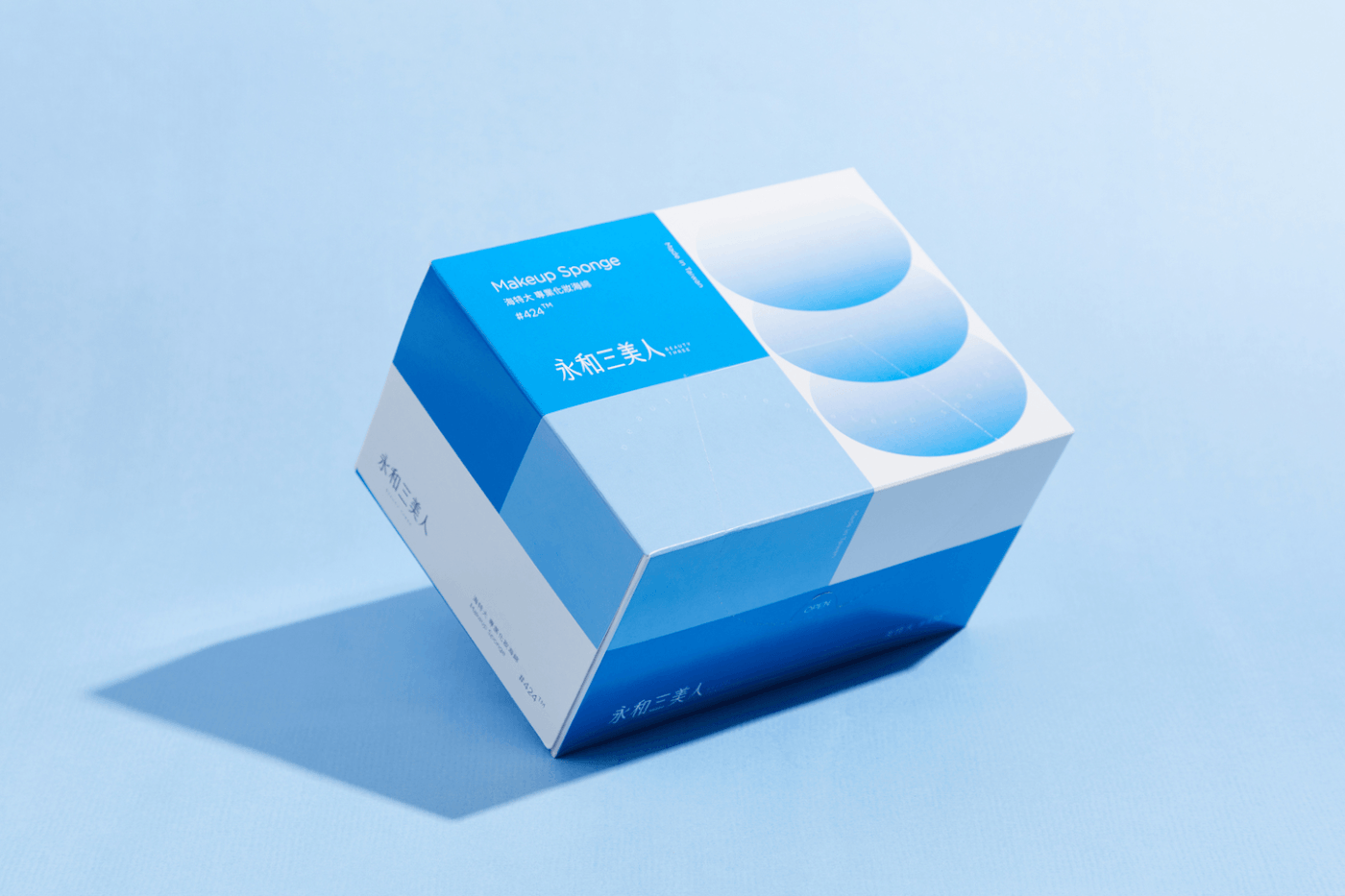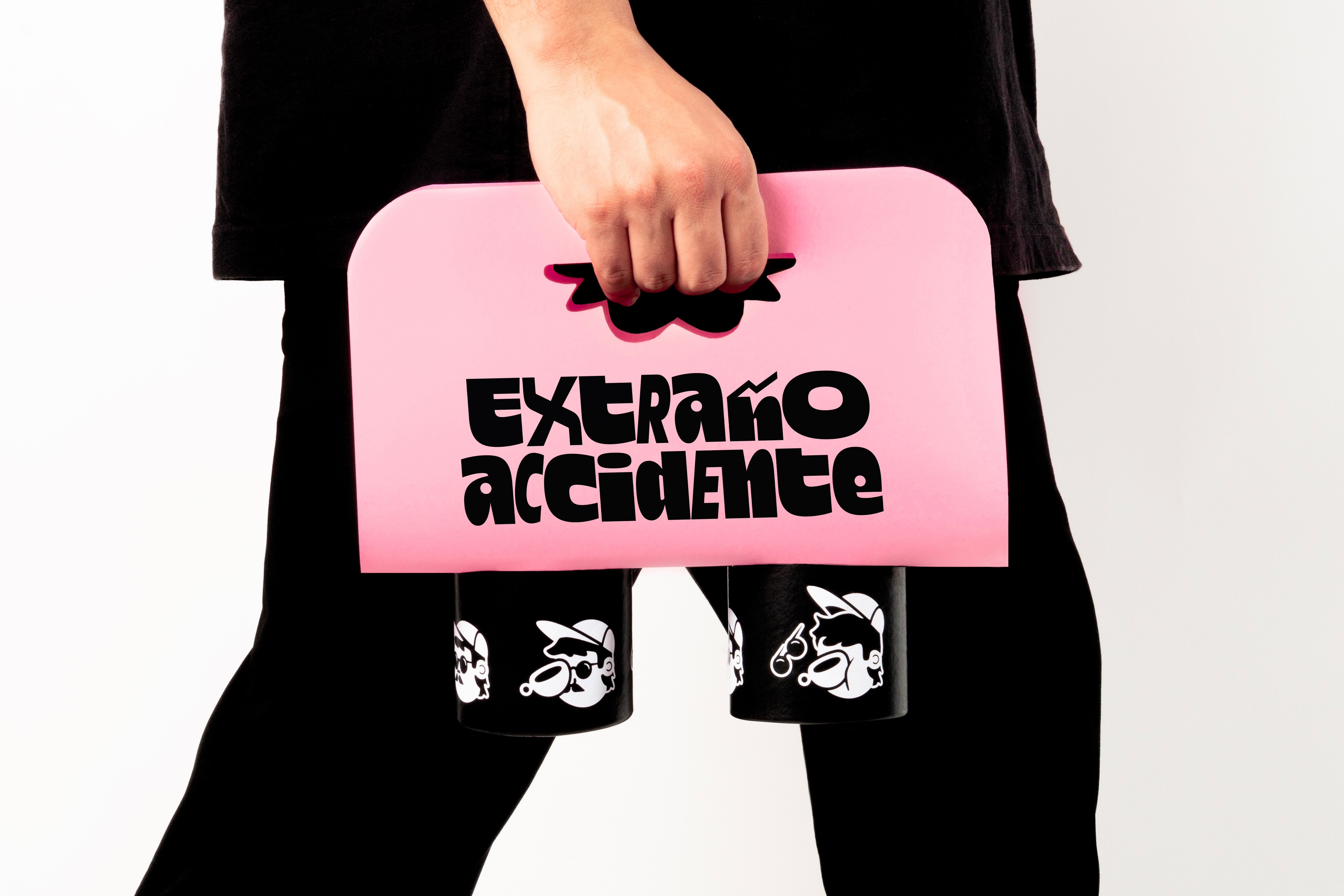你吃了吗 / Have You Eaten Yet?
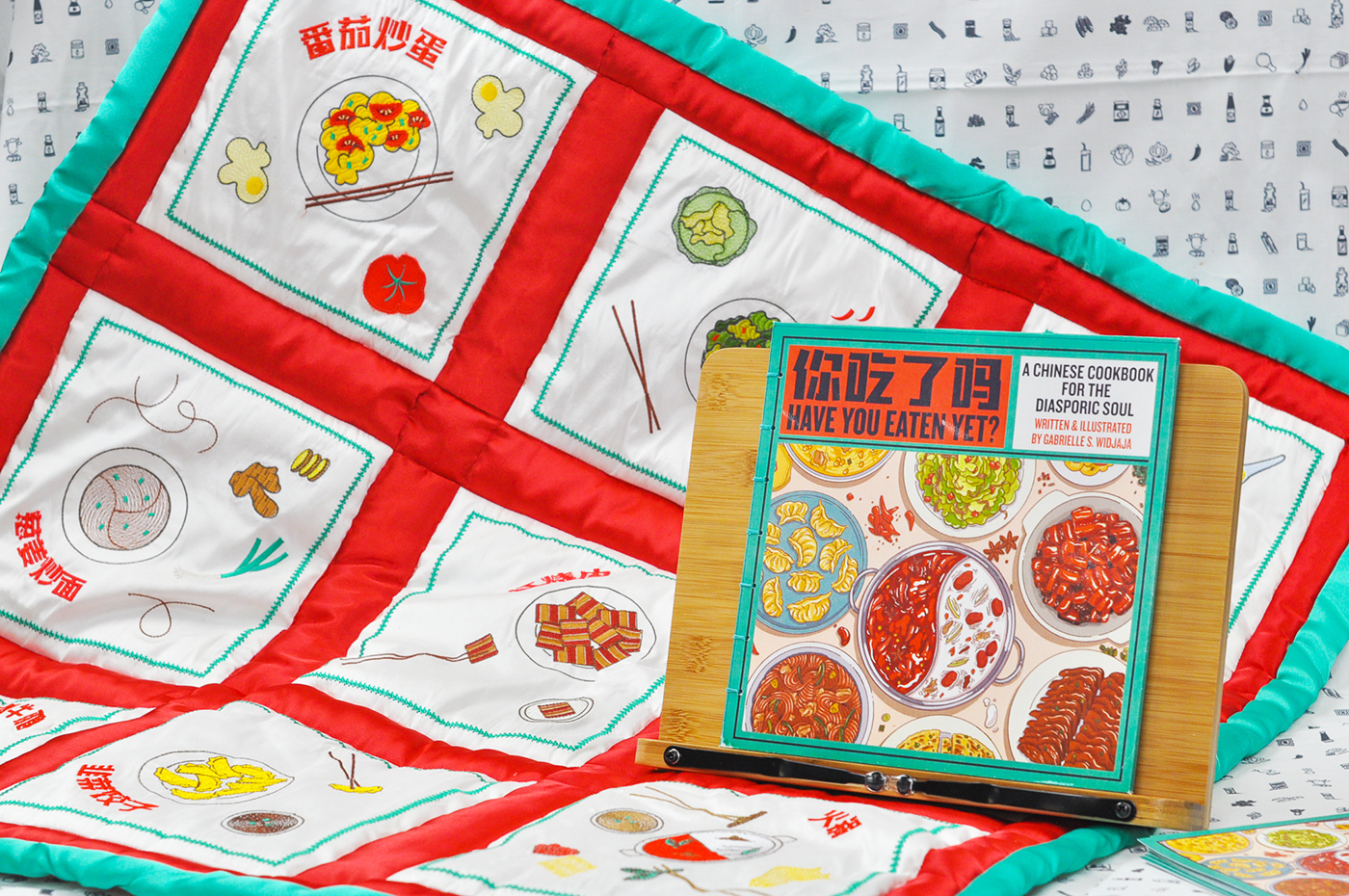
For my degree project at the Rhode Island School of Design BFA Graphic Design, I focused on the practice of relearning and reclaiming my Chinese heritage as well as the narrative of the Asian-American experience. Specifically, I designed a project about food as a medium of cultural literacy (though we are far from our homelands, we draw closer to our cultural identities through cooking, eating, and sharing meals). The project is two-fold:
Part I: Cookbook
Part II: Comfort Food Quilt
Abstract
In Asian households, we don't often say "I love you." Instead, we say, "Have you eaten yet?" (你吃了吗?) This is a deceivingly simple and mundane question. But for us, it bears the weight of relationships, of family, of connection. This statement addresses not only the love for a person, but also a concern for their overall health and well-being. When we fight with our parents, we don't necessarily apologize afterwards. My mom just says, "Dinner is ready; come downstairs." And without being asked, my dad would bring me a bowl of cut-up fruit while I'm doing homework. Food is our language of love and care. Which begs the question, what are we eating? And why? To which my answers respectively are, the food of our ancestors, to nourish our cultural identities.
Growing up as a first-generation Asian-American, I was barely even cognizant of my Chinese background. That's just what it had become - background noise. Sometimes, the only way it crept its way into the foreground of my life was through these peripheral moments. Like when my grandpa used to ask, 你想吃什么? (What do you want to eat?)
"Not now, Grandpa. I'm not hungry," I would bark back in English.
And like, when my mom used to play 月亮代表我的心 / Yue Liang Dai Biao Wo De Xin (the moon represents my heart) over and over again in the car, until I shouted at her to turn it off because I was so annoyed. In our fervent pursuit of American-ness, of acceptance, we reject our own cultural identities for the sake of feigned belonging.
It wasn't until I started college that I began to feel regret, as the absence of identity that I was once blissfully unaware of dawned on me. I realized how little I knew about Chinese culture. Was it even mine to claim? I felt what little of it I had was slipping quickly through my fingers, like grains of rice blown by a westward gust of wind. The flame of heritage grows weaker and dimmer with each diasporic generation. But I was determined to relight this cultural torch and continue passing it down my family.
The narrative of the Asian-American experience is one of assimilation, loss of culture, and re-learning. Our culture is a vast ocean, and I find myself stranded on Western sands, only ever able to wade in the shallows. This shallowness defines Asian-American-ness. We have no access to the nuances of our culture-- inaccessible to our westernized hands, indiscernible to our Americanized ears. What we can grasp, what we can relate to, are but the very outer margins of pages lost in translation. But for me, and certainly for many others, one thing is for sure: Food is the life raft that has gently carried us into, and helped us navigate, the daunting waves of our ancestral oceans. It is an important entry point through which we can begin to realize our cultural identities.
Although I am not fluent in Mandarin, being literate in the language of Chinese cuisine is comforting because food is such an integral part of every culture. Through learning how to cook Chinese dishes, memorizing names of ingredients and spices, learning to tell the differences in methods of preparation, flavor profiles, preferences, and tendencies, I feel I have slowly acquired a firmer grasp on my heritage. It makes me proud because now there IS in fact, something I know about Chinese culture. Being able to order in a Chinese restaurant, recognize names of dishes, knowing a specific way something is cooked and what kind of flavor profile to expect just from the name of it is an exciting thing.
For me, food has been an important medium of cultural literacy, and a huge aspect of re-learning and reclaiming my Chinese heritage. It has been a cathartic healing and self-care practice, and it has very much initiated a reconciliation of my relationship with my family lineage and put a new spin on the term "comfort food". For the first time in my life, I feel more Chinese than ever. Lately, I have been playing 月亮代表我的心 on repeat everyday, I've been taking Mandarin courses at Brown University, and for the first time I've been able to text my mom and my grandpa in Chinese. So I ask those of you of the diasporic Asian-American community, have you eaten yet? I hope to share my story with you, and remind you that home is never as far as we imagine. Though broken Chinese cuts my mouth like glass, the taste of home soothes the wounds.
Degree Project Trailer Video
I created this video as part of DP requirements at RISD; it sums up the narrative of my degree project and the process of its creation!
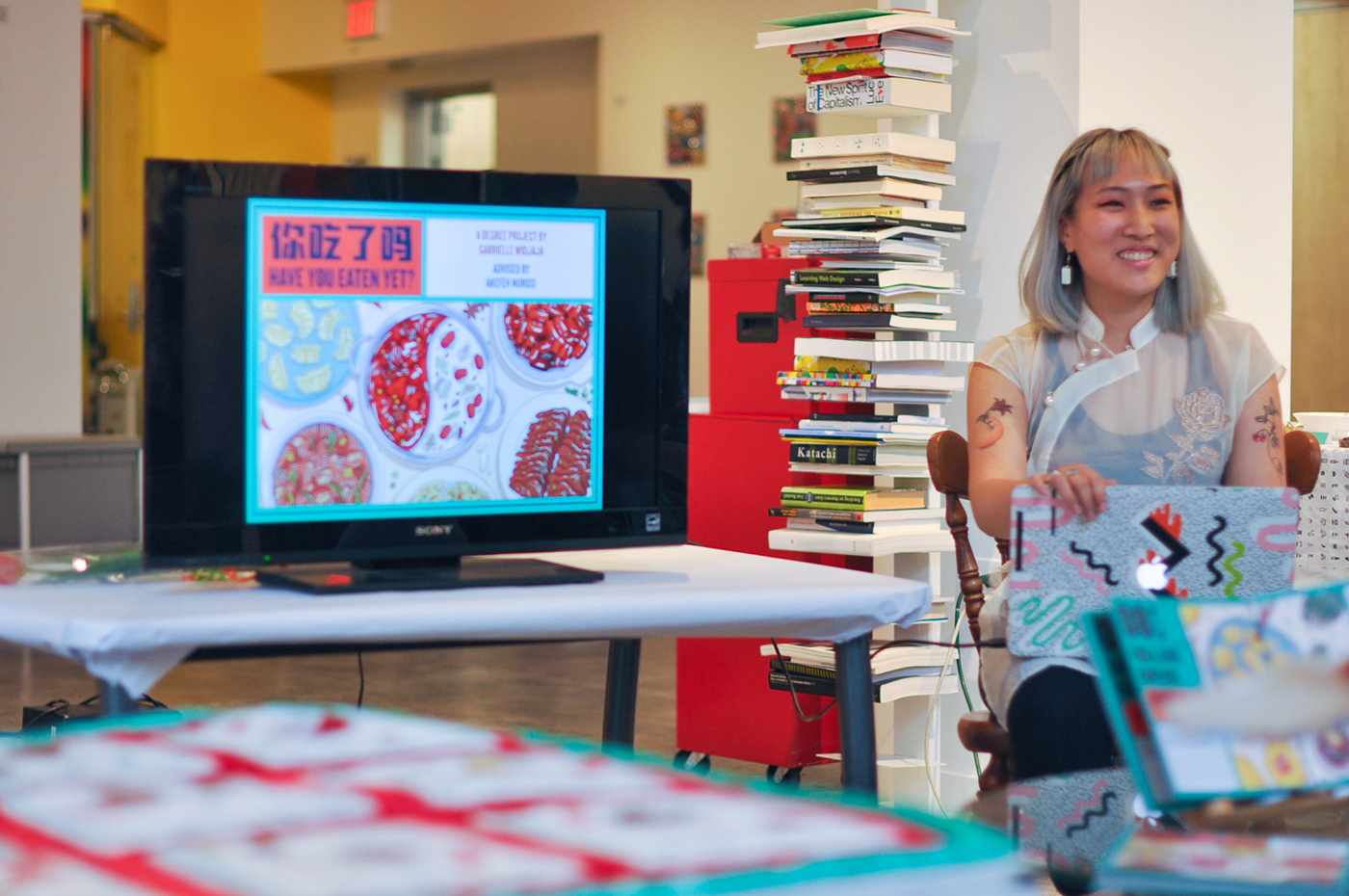
Part I: Cookbook
Of course, in any project pertaining to food, the most reasonable deliverable to create is a cookbook. Thus, I wanted to design an introductory cookbook dedicated to other Asian-Americans going through the same things I had experienced. For this book I chose 9 recipes starting from easy, and each more challenging than the previous.


The book is coptic stitched and printed on glossy bristol vellum.
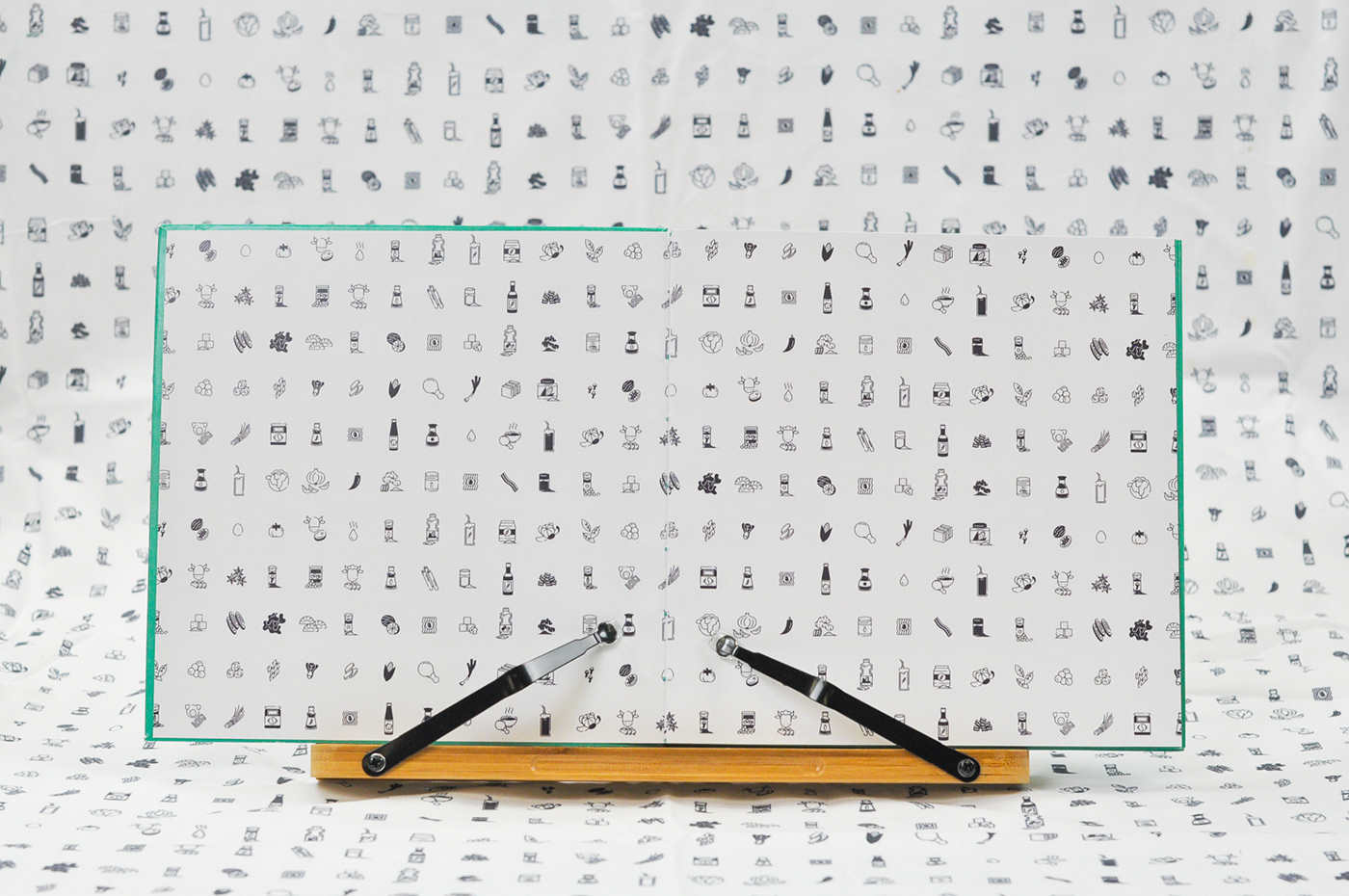
Endpages design


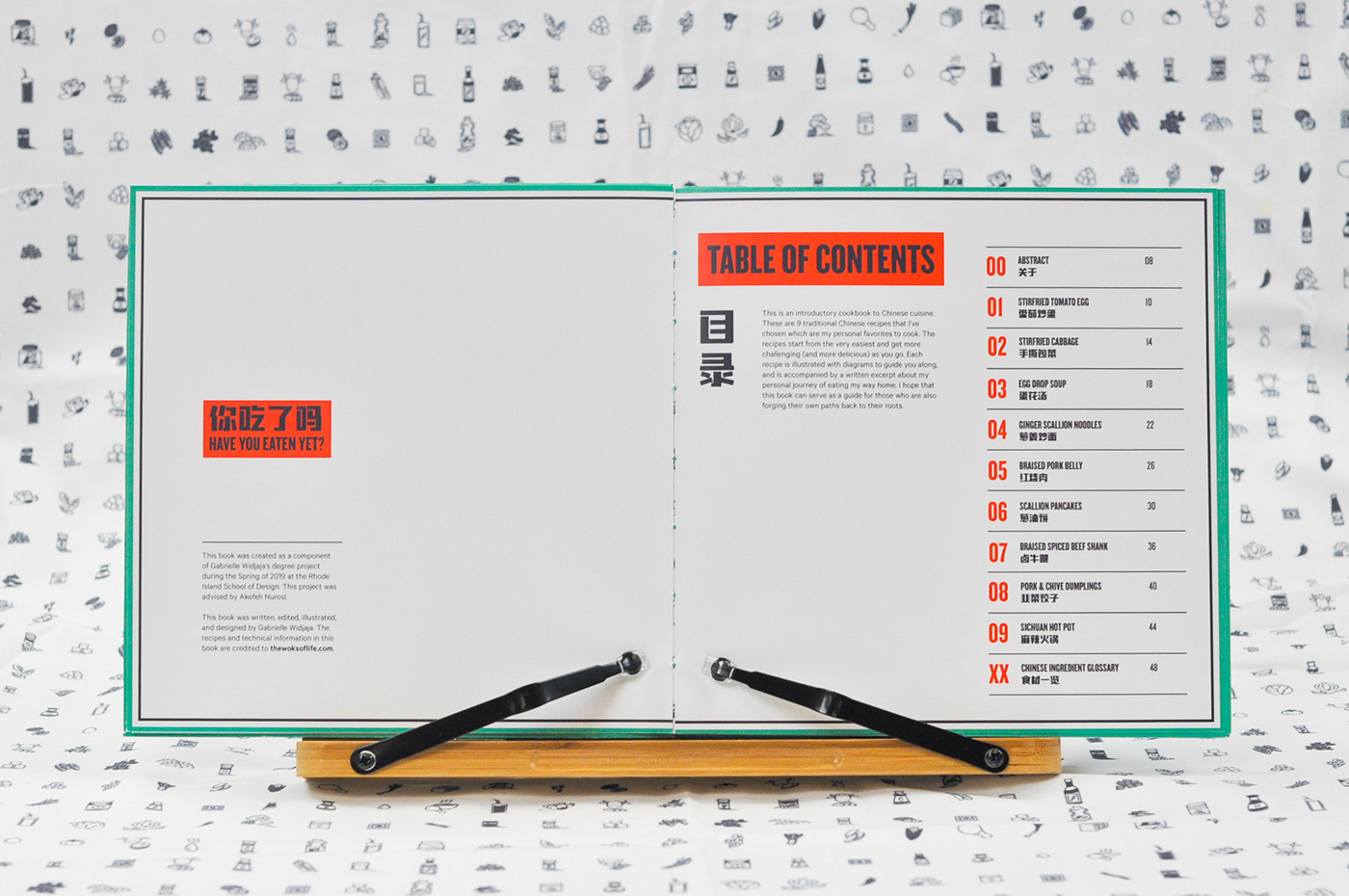

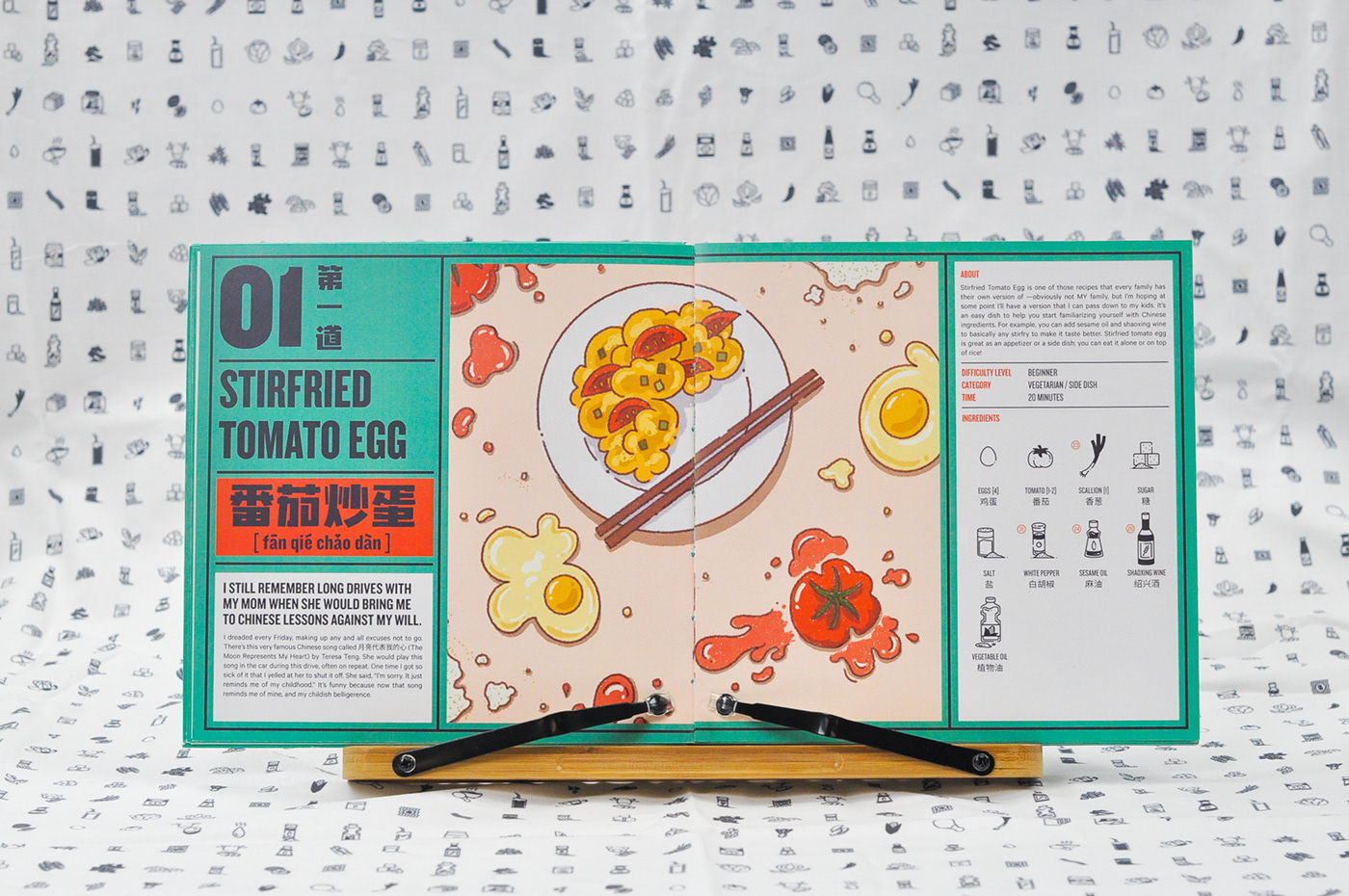
Recipe 1: Stirfried Tomato Egg
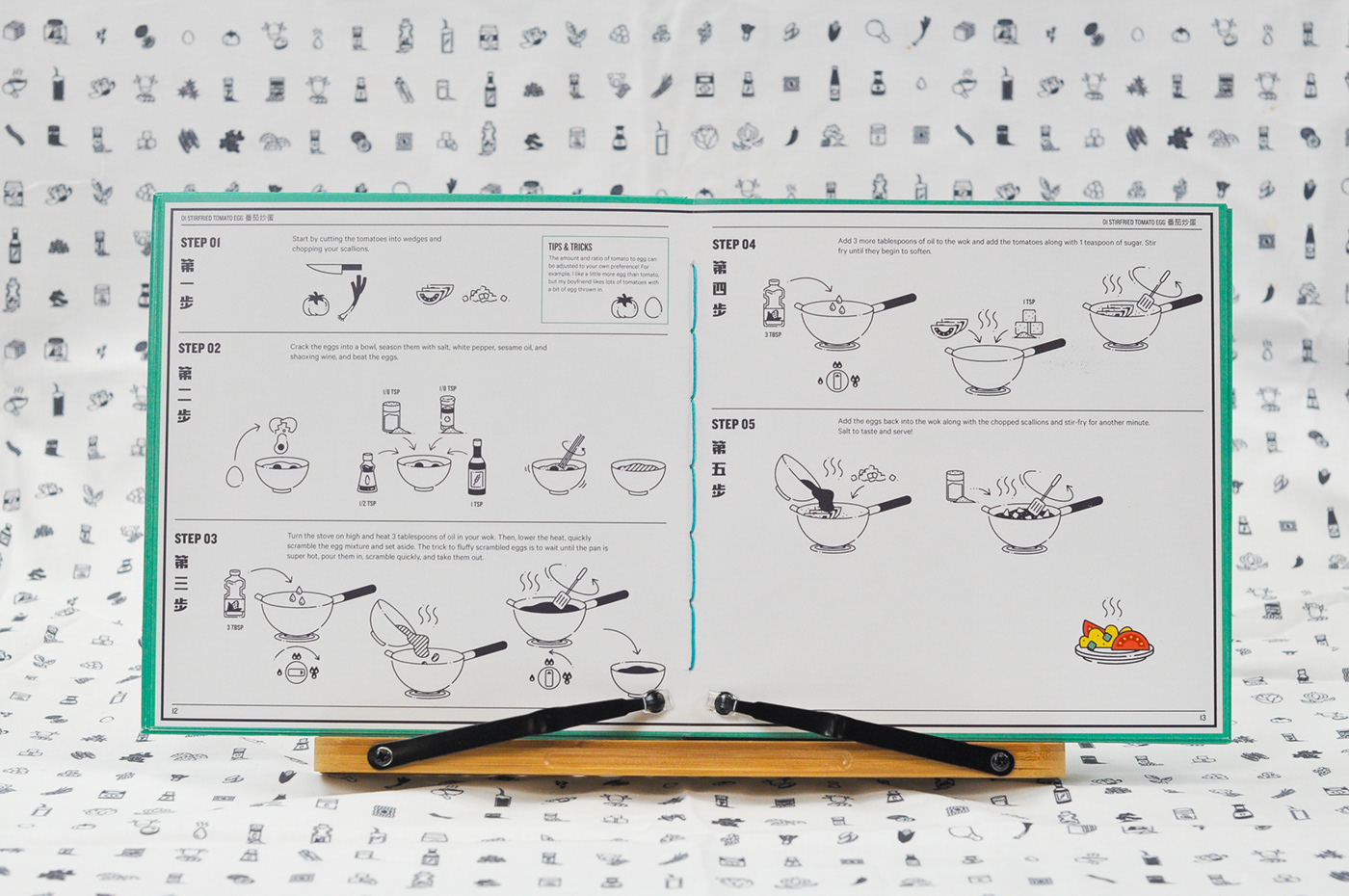

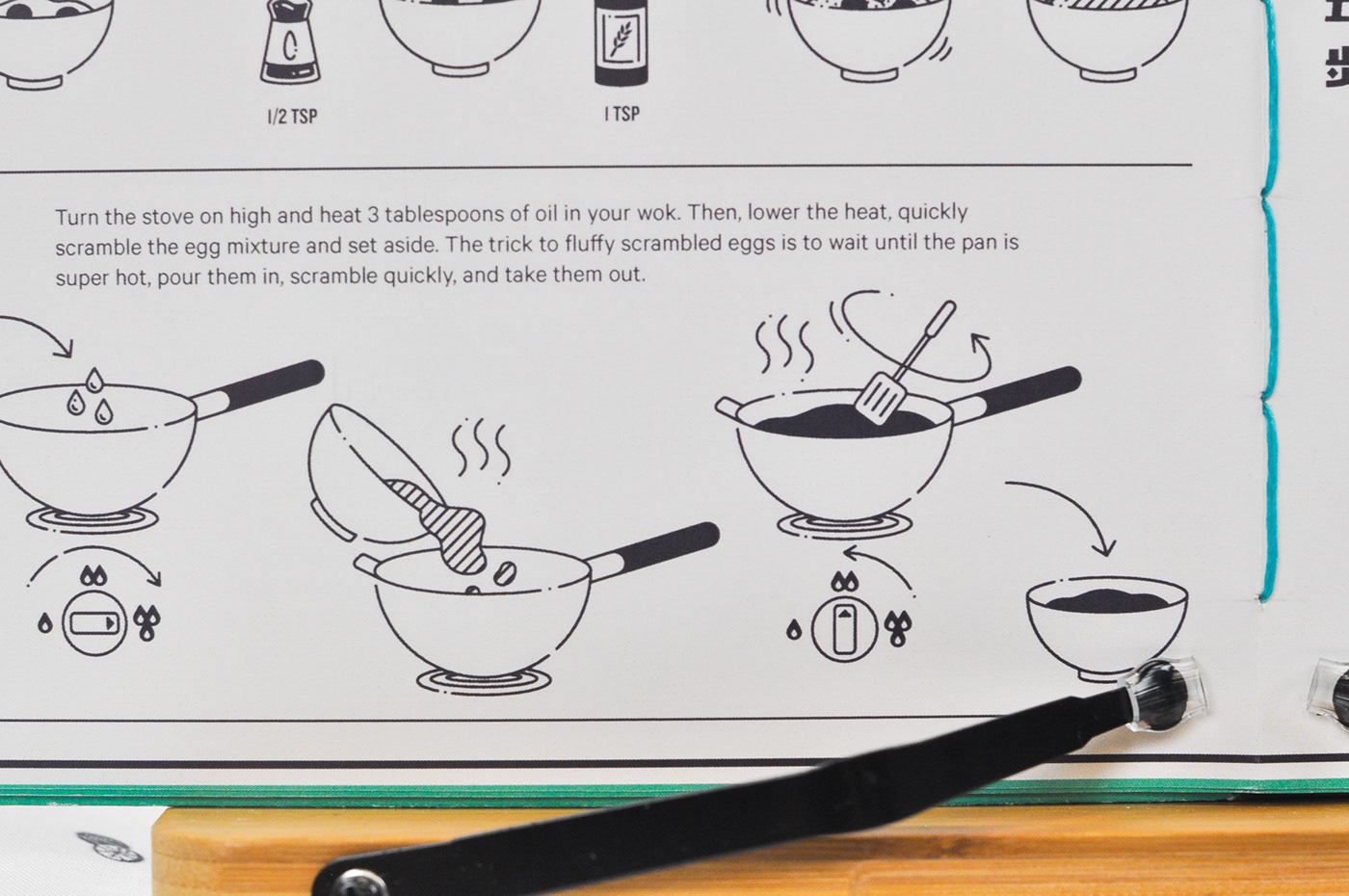

Recipe 2: Stirfried Cabbage
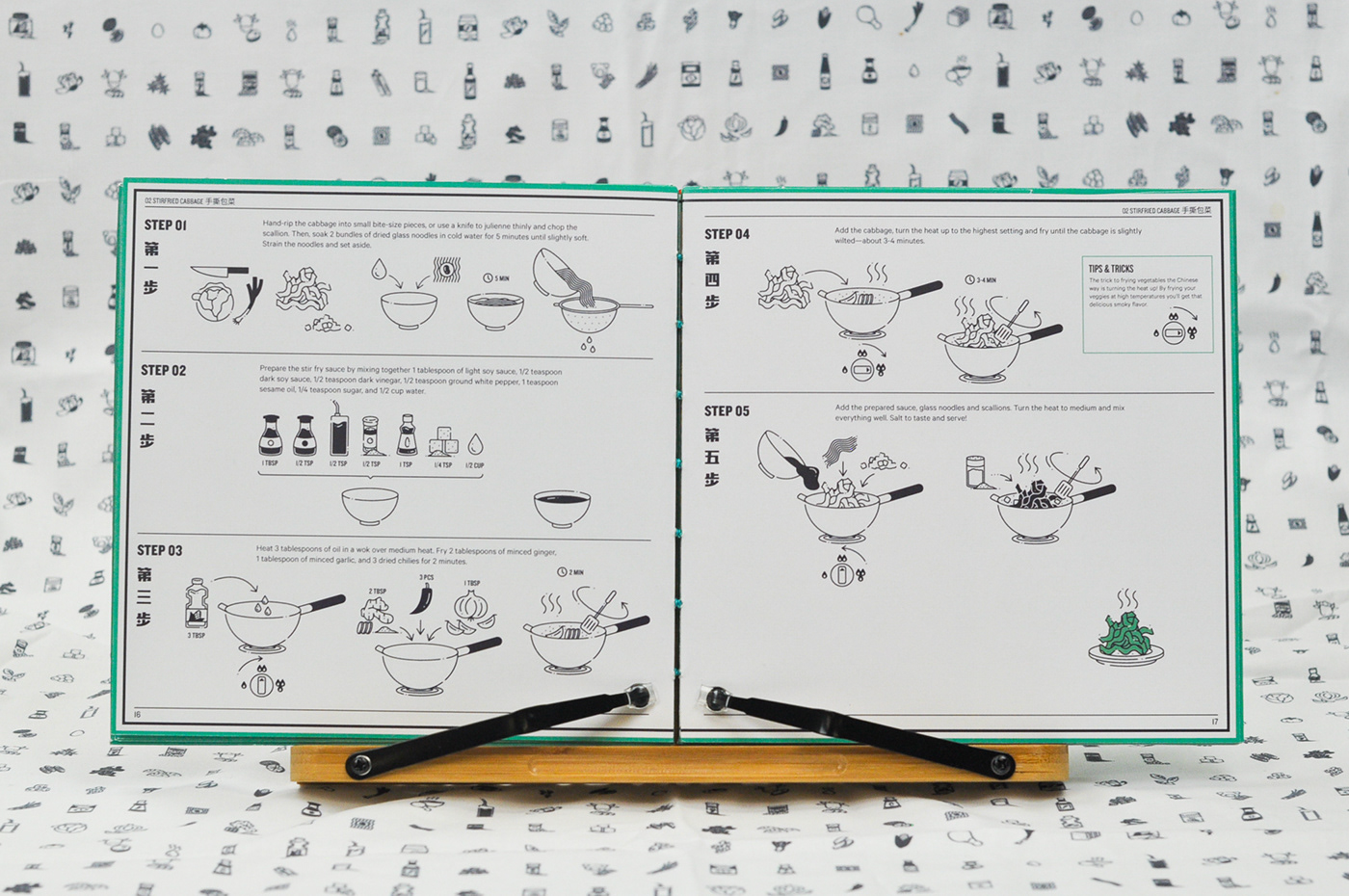


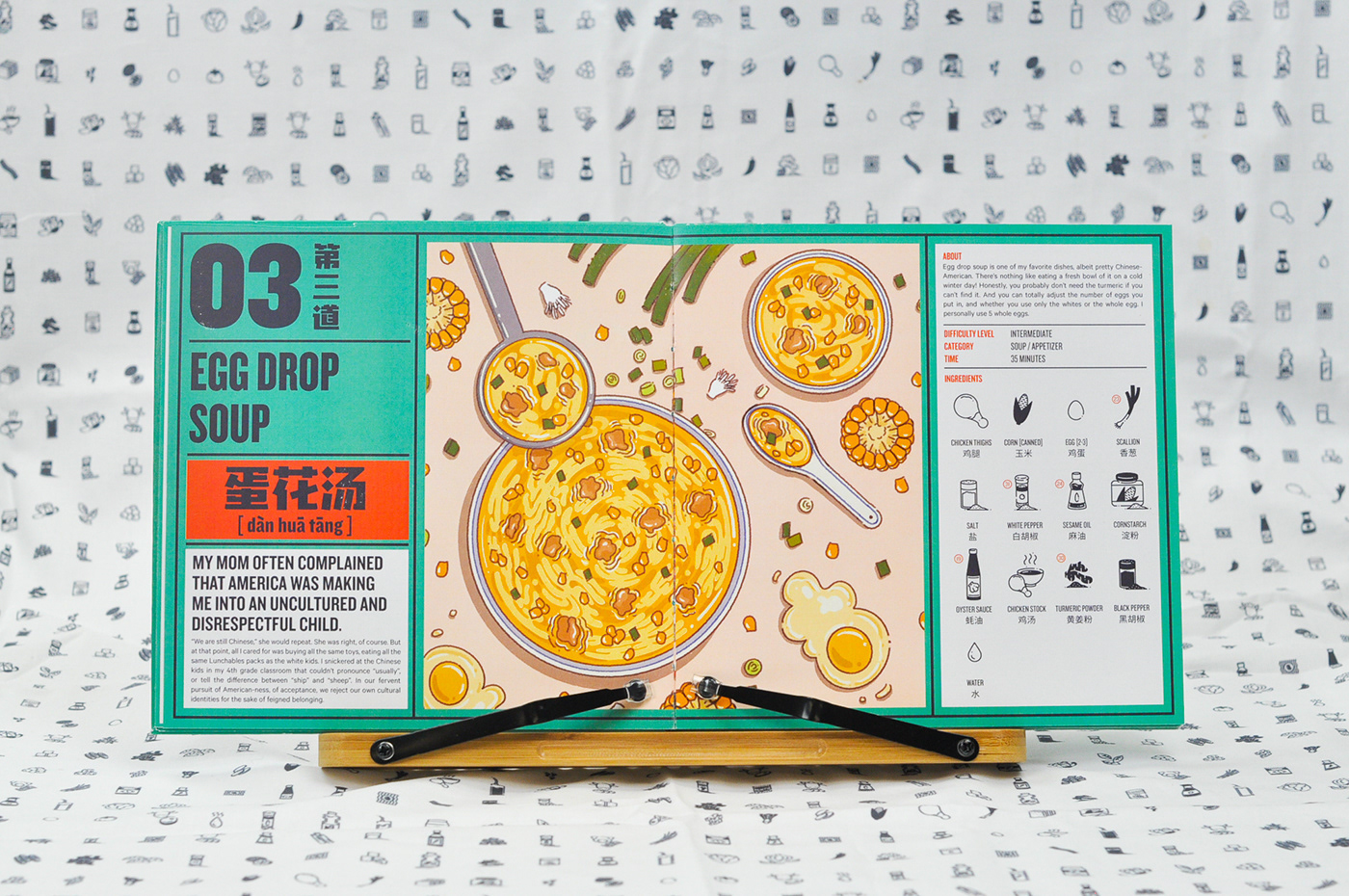
Recipe 3: Egg Drop Soup
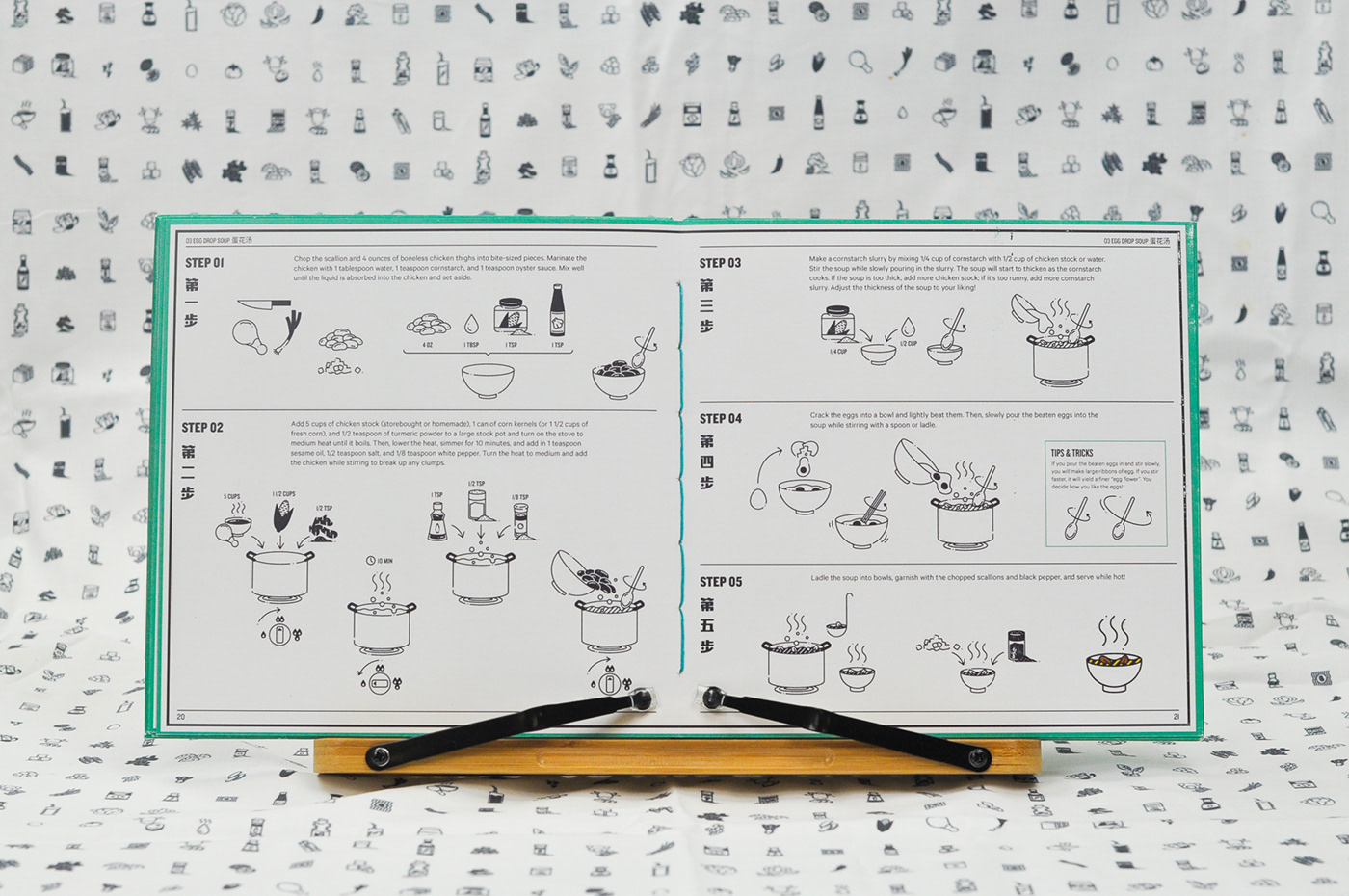

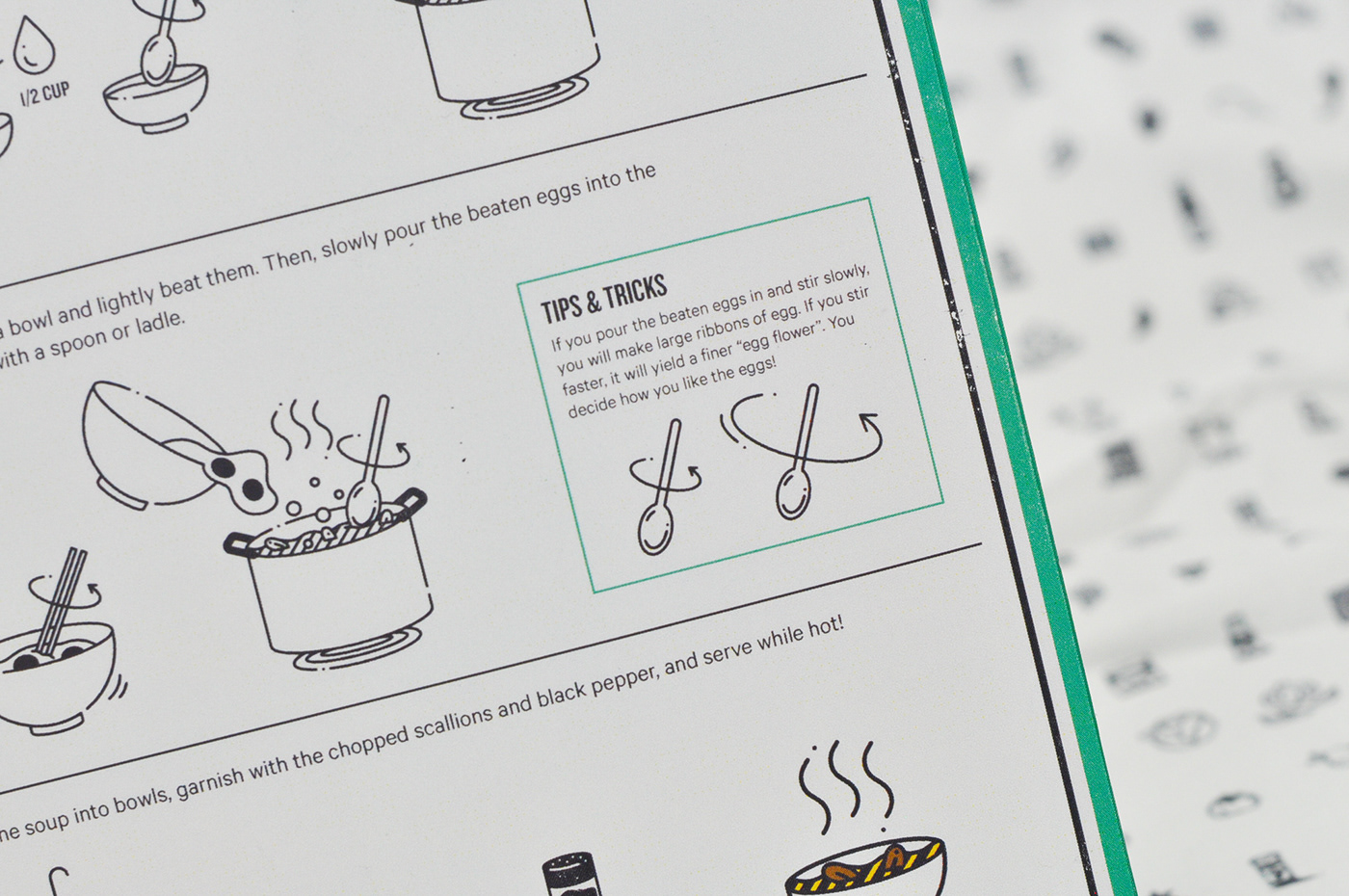
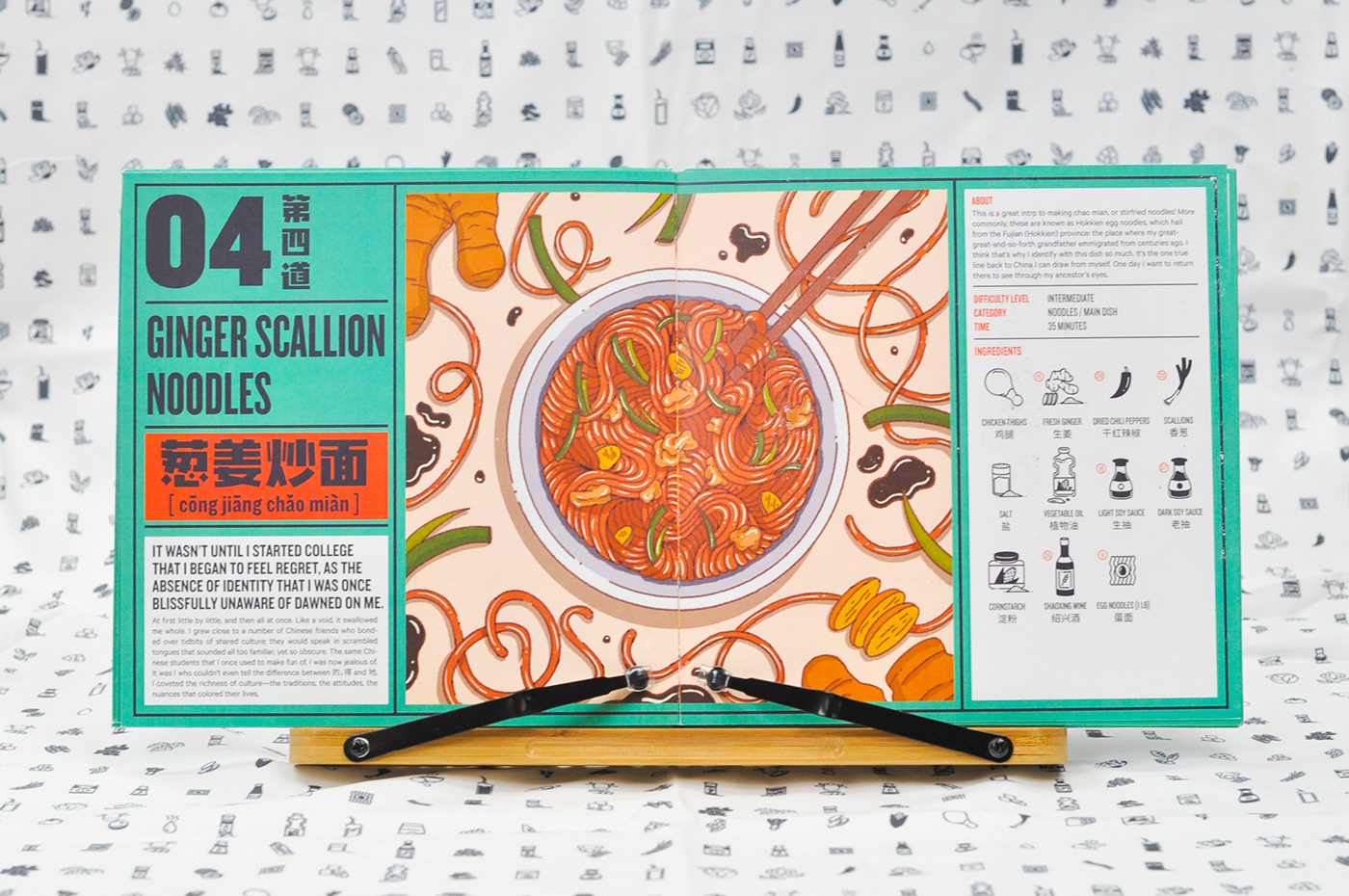
Recipe 4: Ginger Scallion Hokkien Noodles



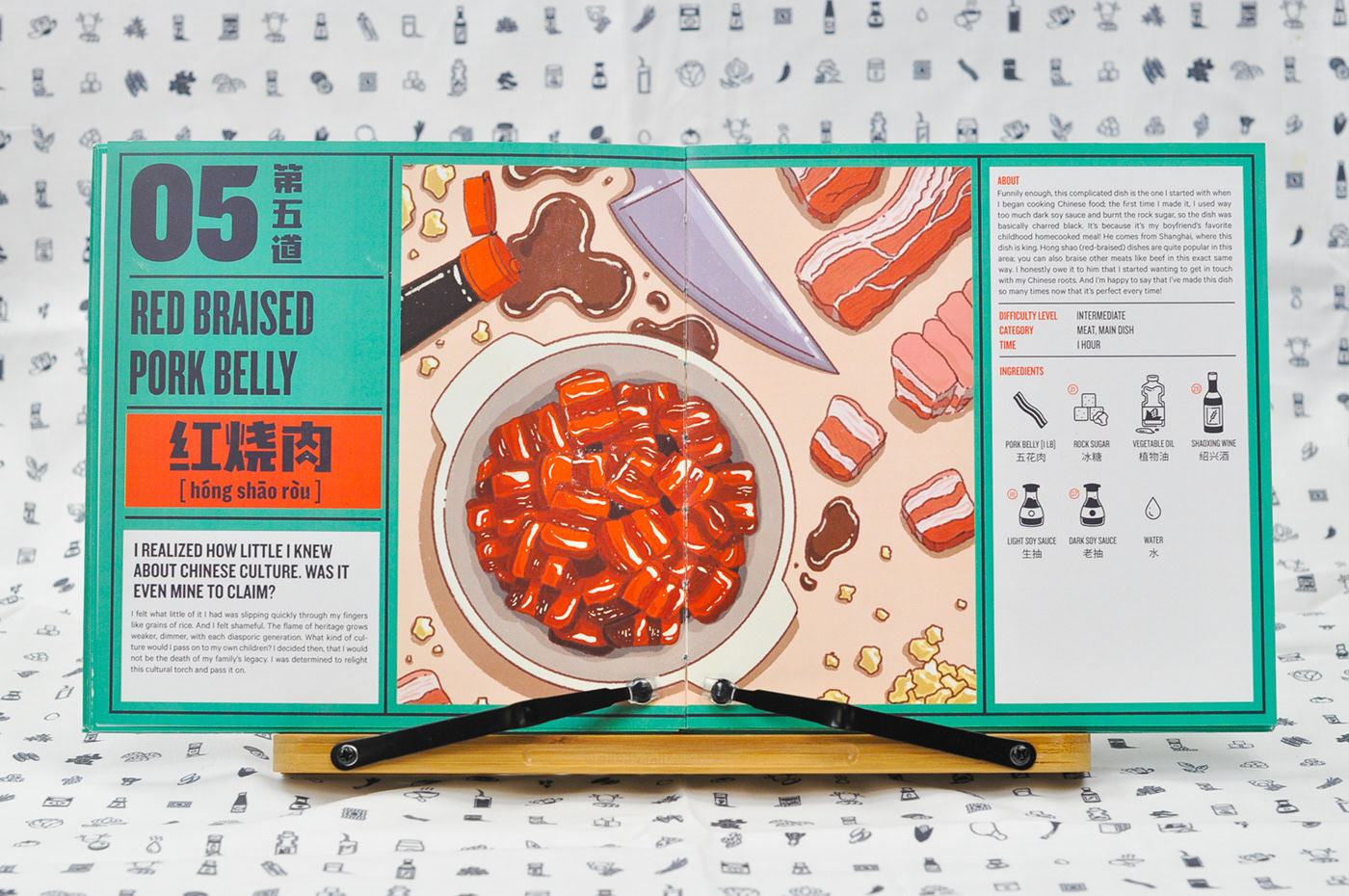
Recipe 5: Red Braised Pork Belly

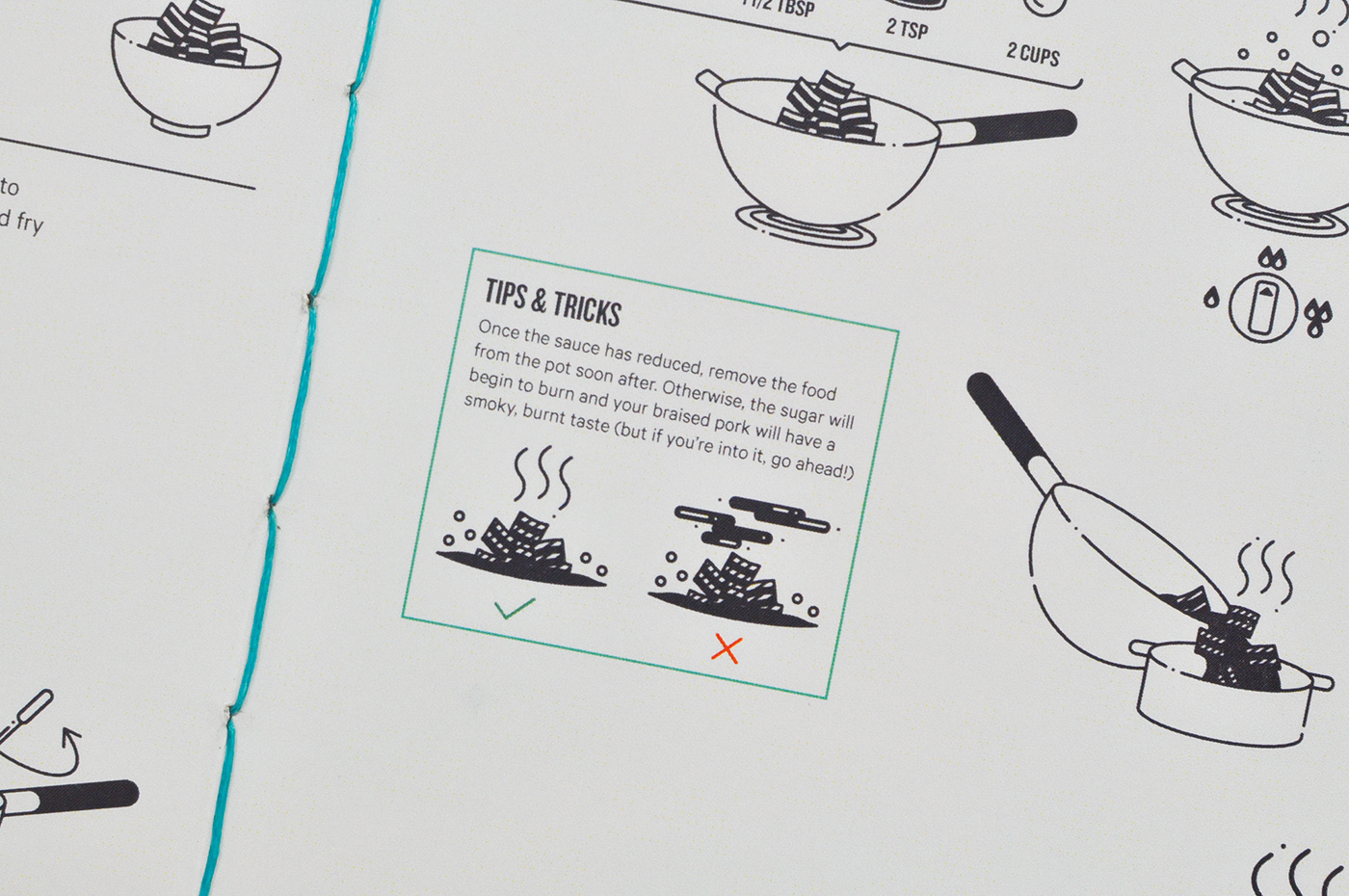
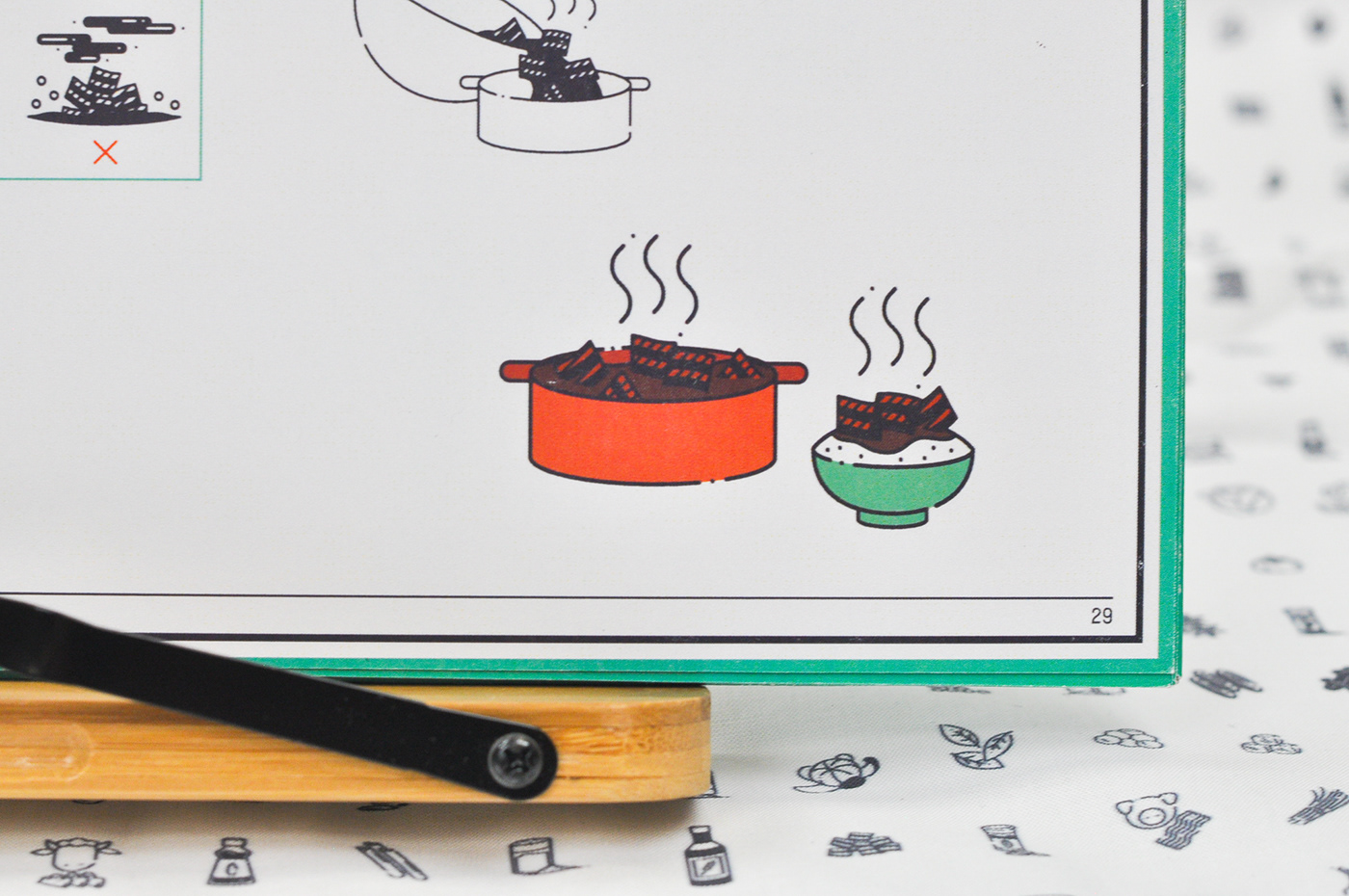
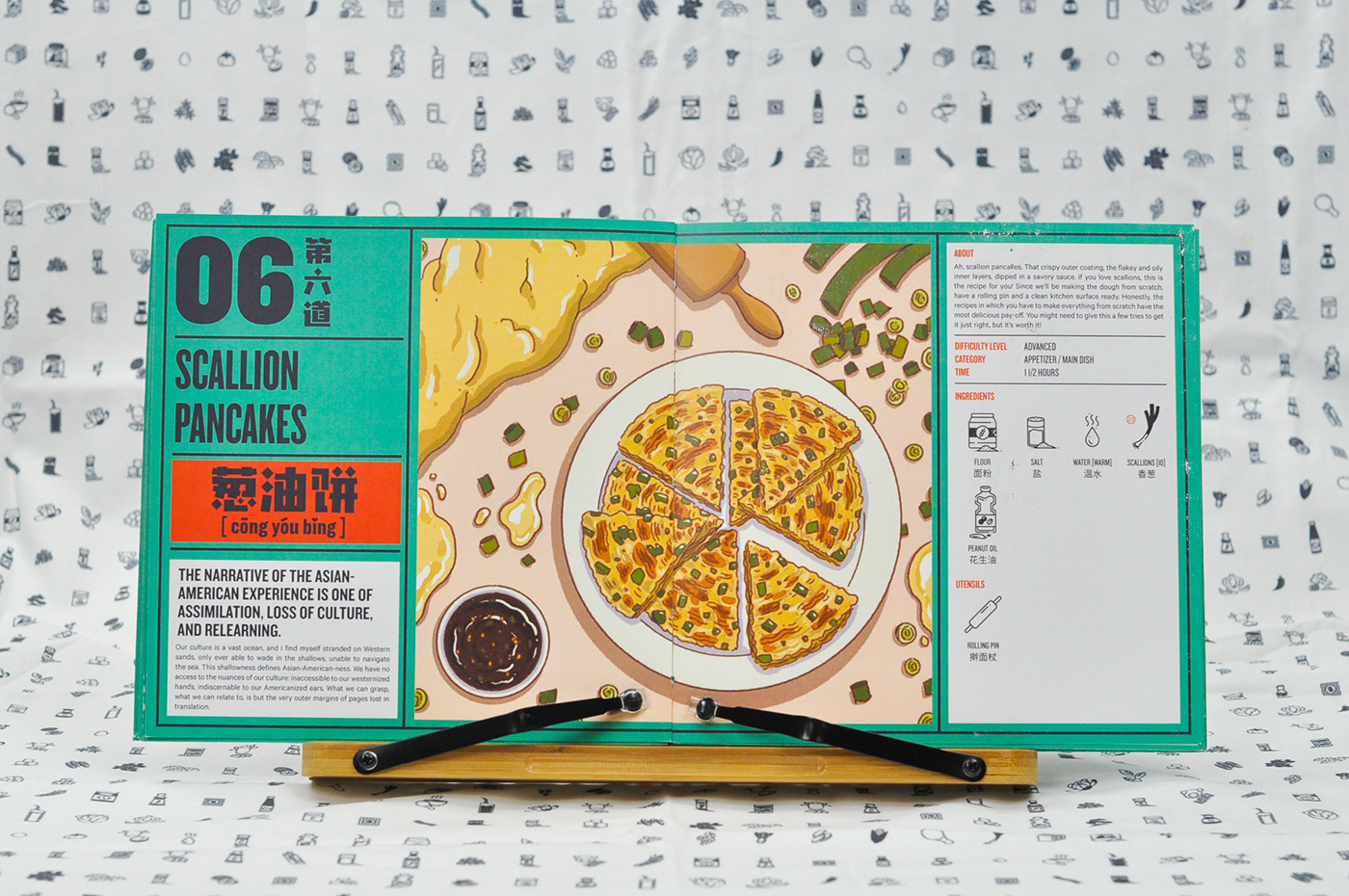
Recipe 6: Scallion Pancakes



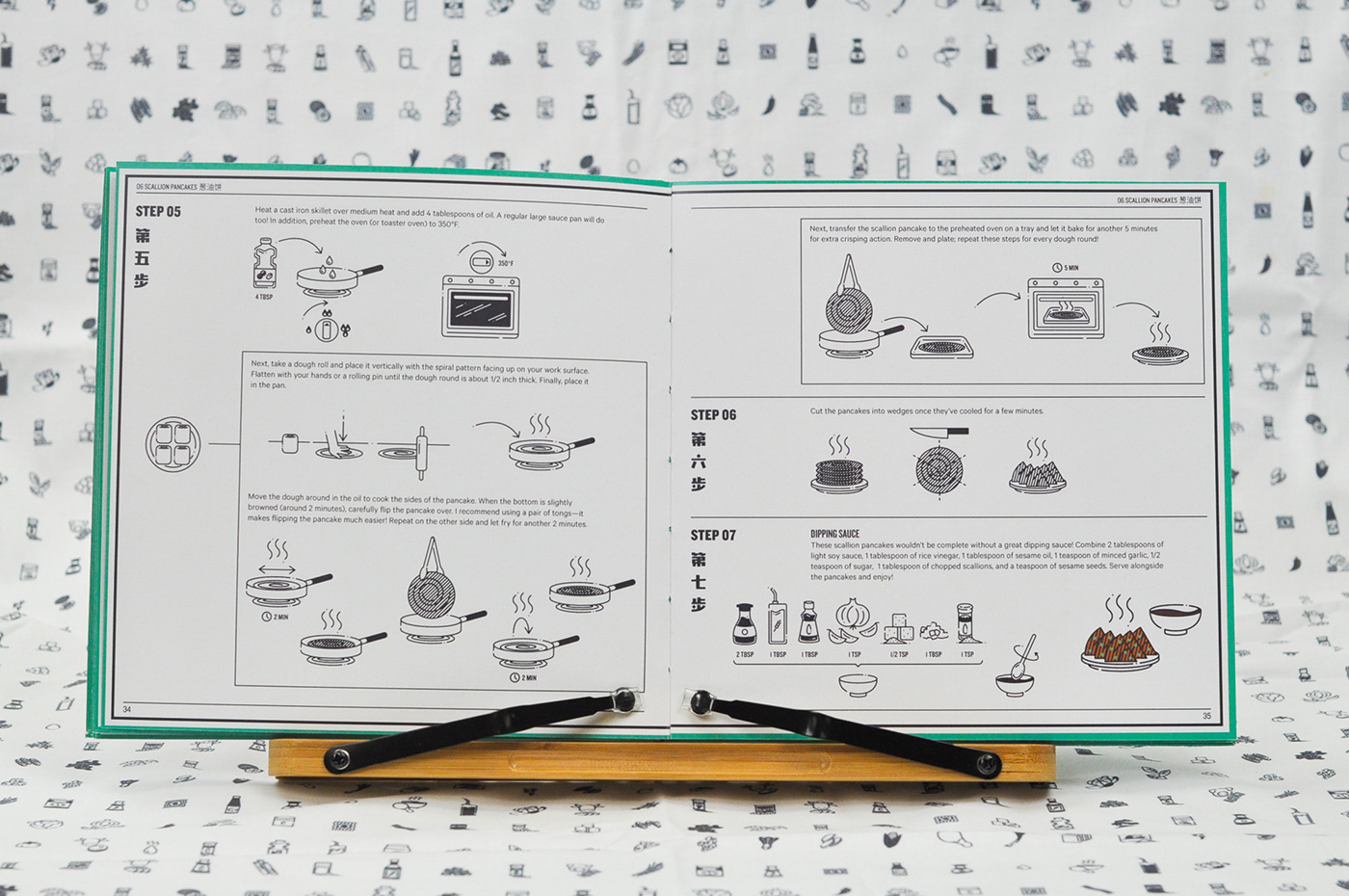


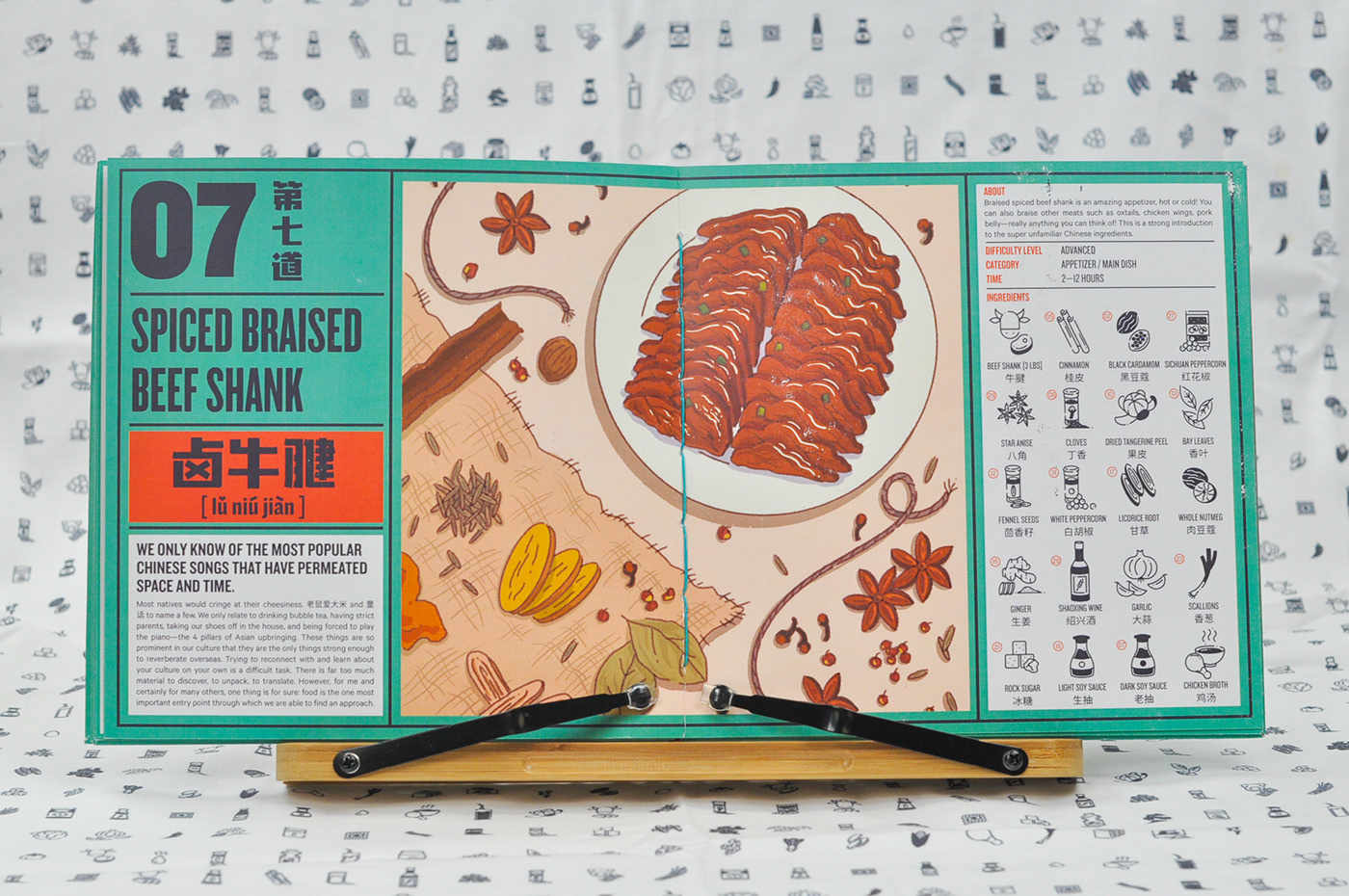
Recipe 7: Spiced Braised Beef Shank




Recipe 8: Pork & Chive Dumplings



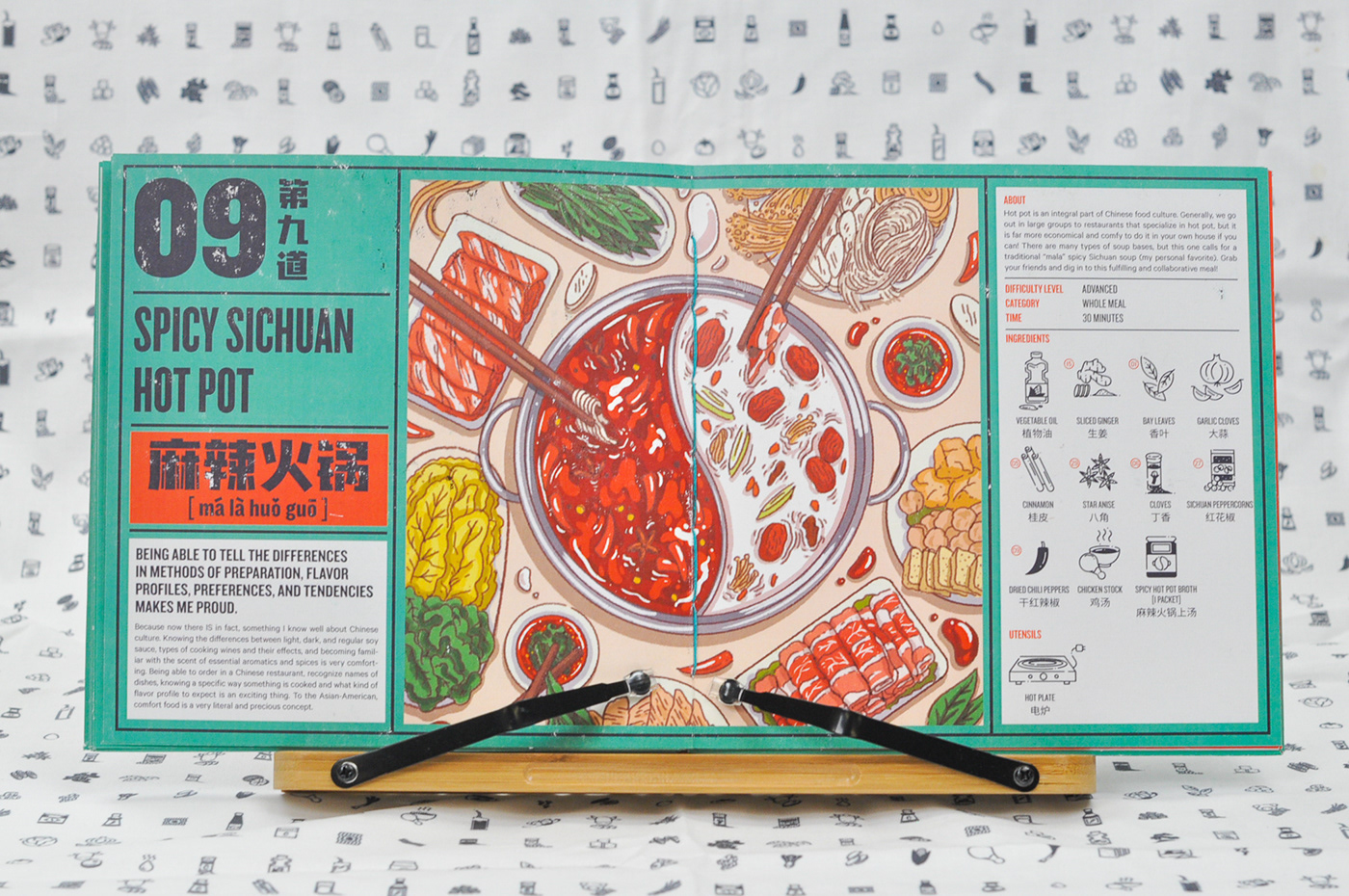
Recipe 9: Spicy Sichuan Hot Pot
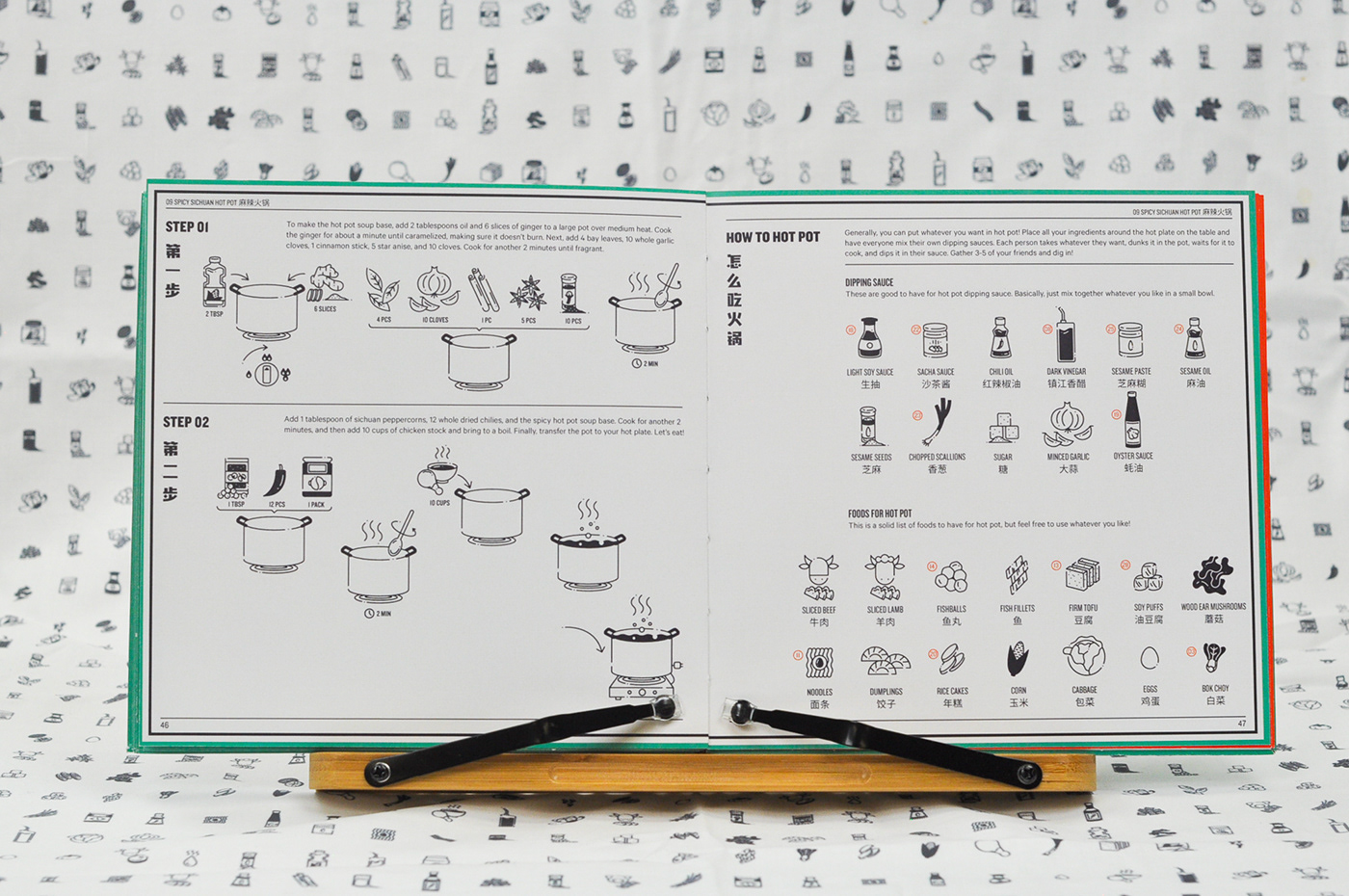
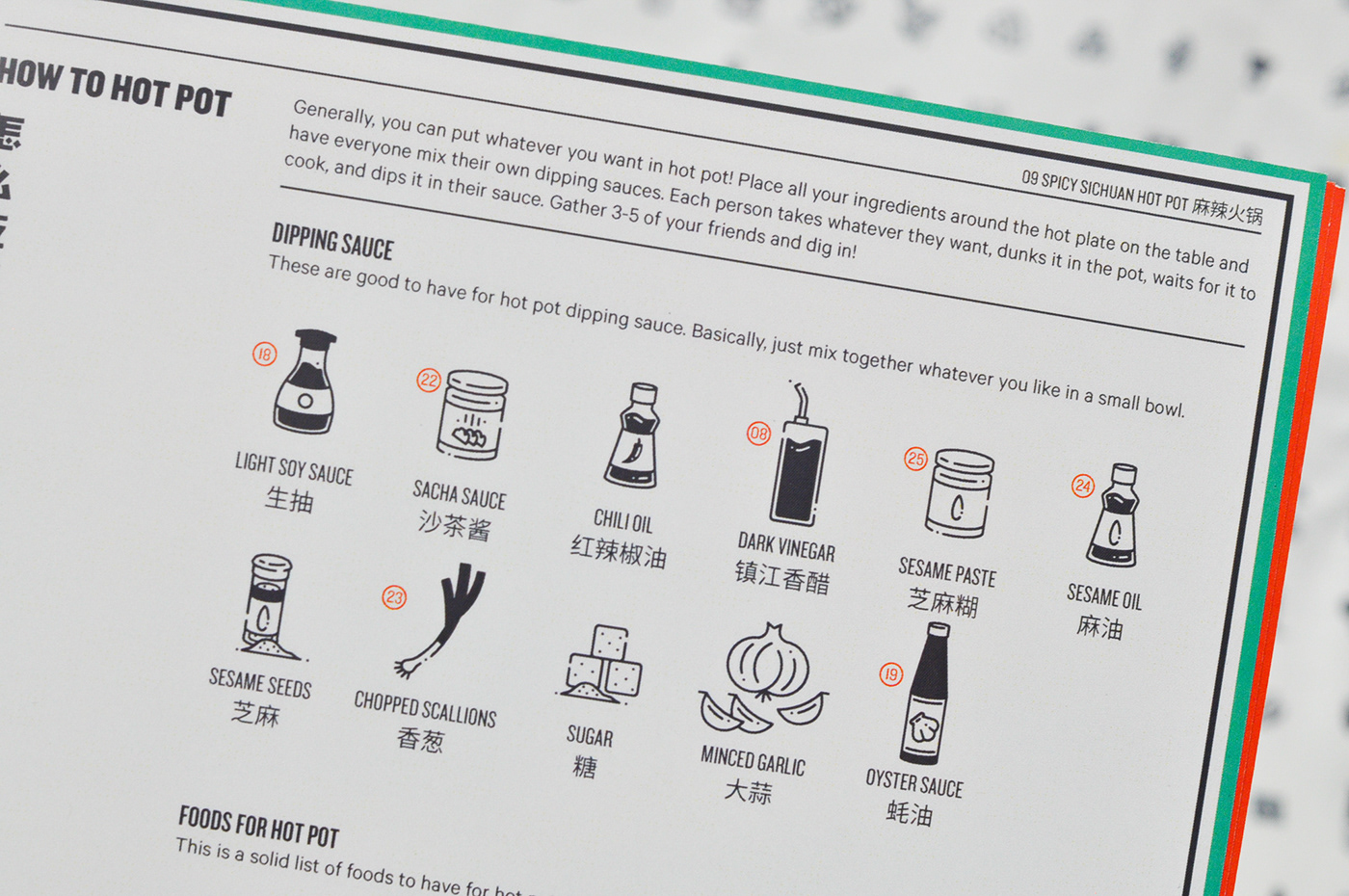
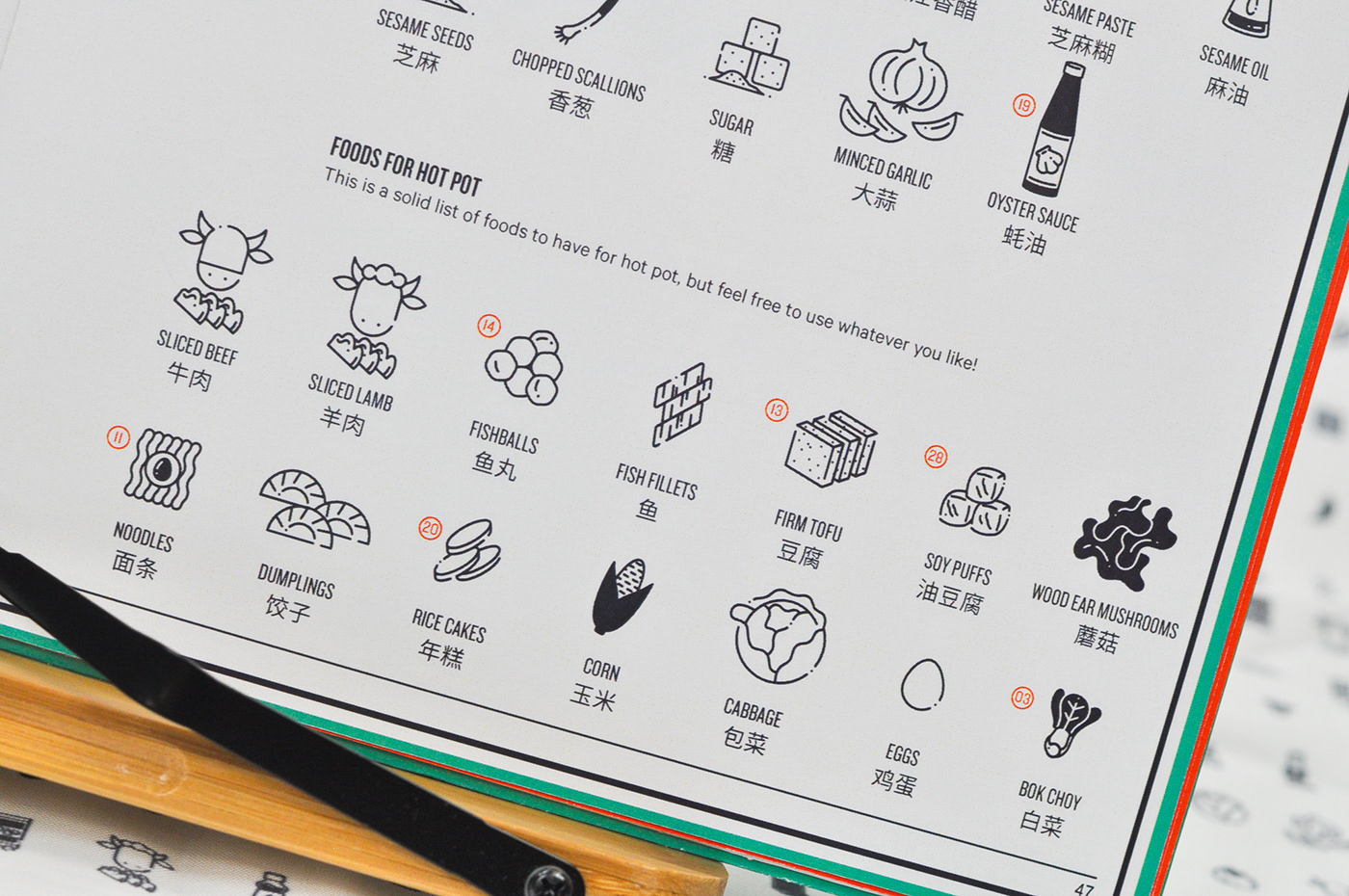
Chinese Ingredient Glossary
Because this is an introduction to Chinese cuisine, I wanted to help the reader in identifying unfamiliar ingredients and be able to look for them in markets. It's also helpful in learning Chinese terms and applying them in real life! Each ingredient is accompanied by an illustration, name, Chinese translation and pinyin pronunciation, as well as a short description. Each recipe's list of ingredients has a few notated with a red circle, which refers to this glossary.

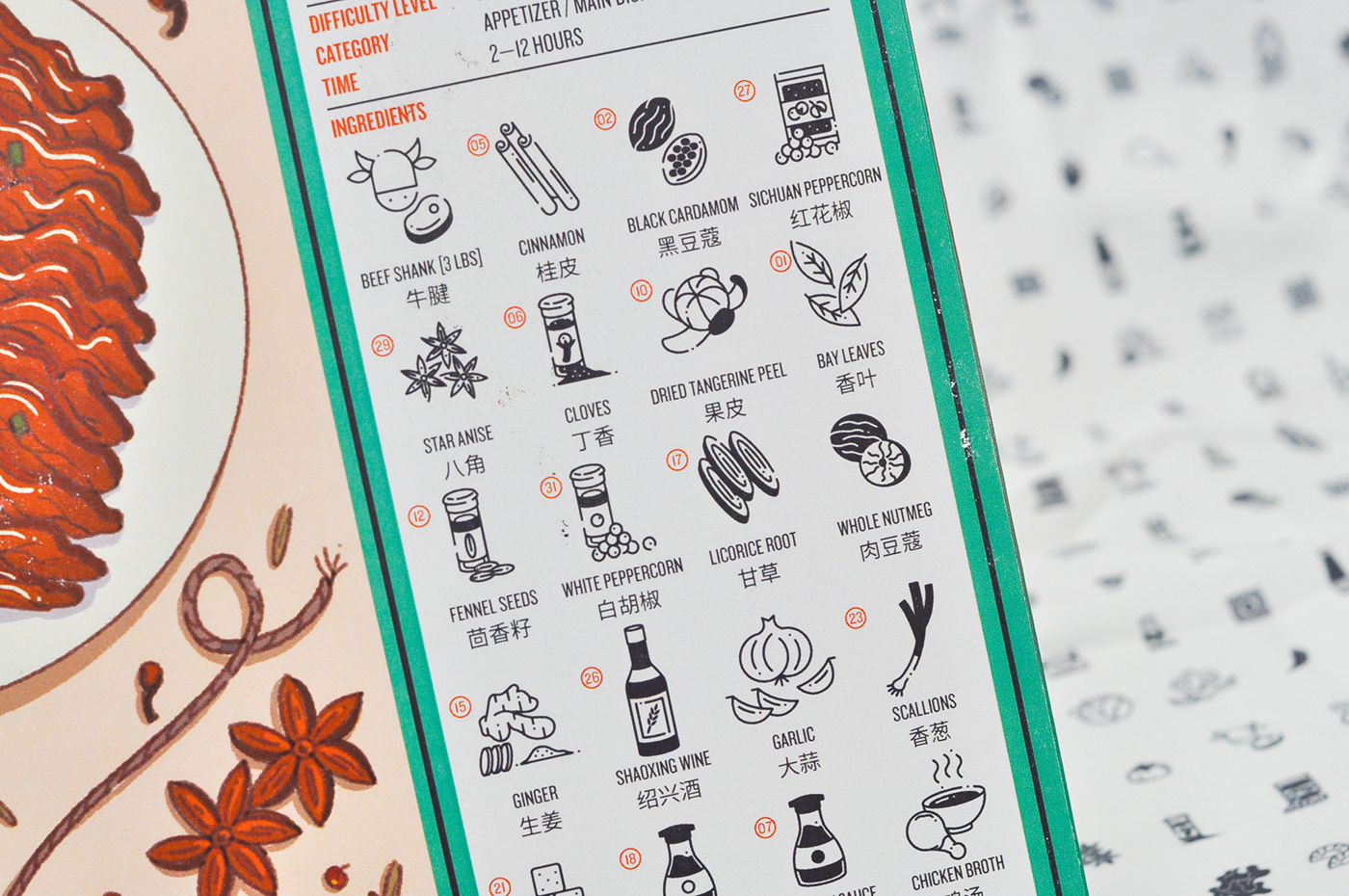




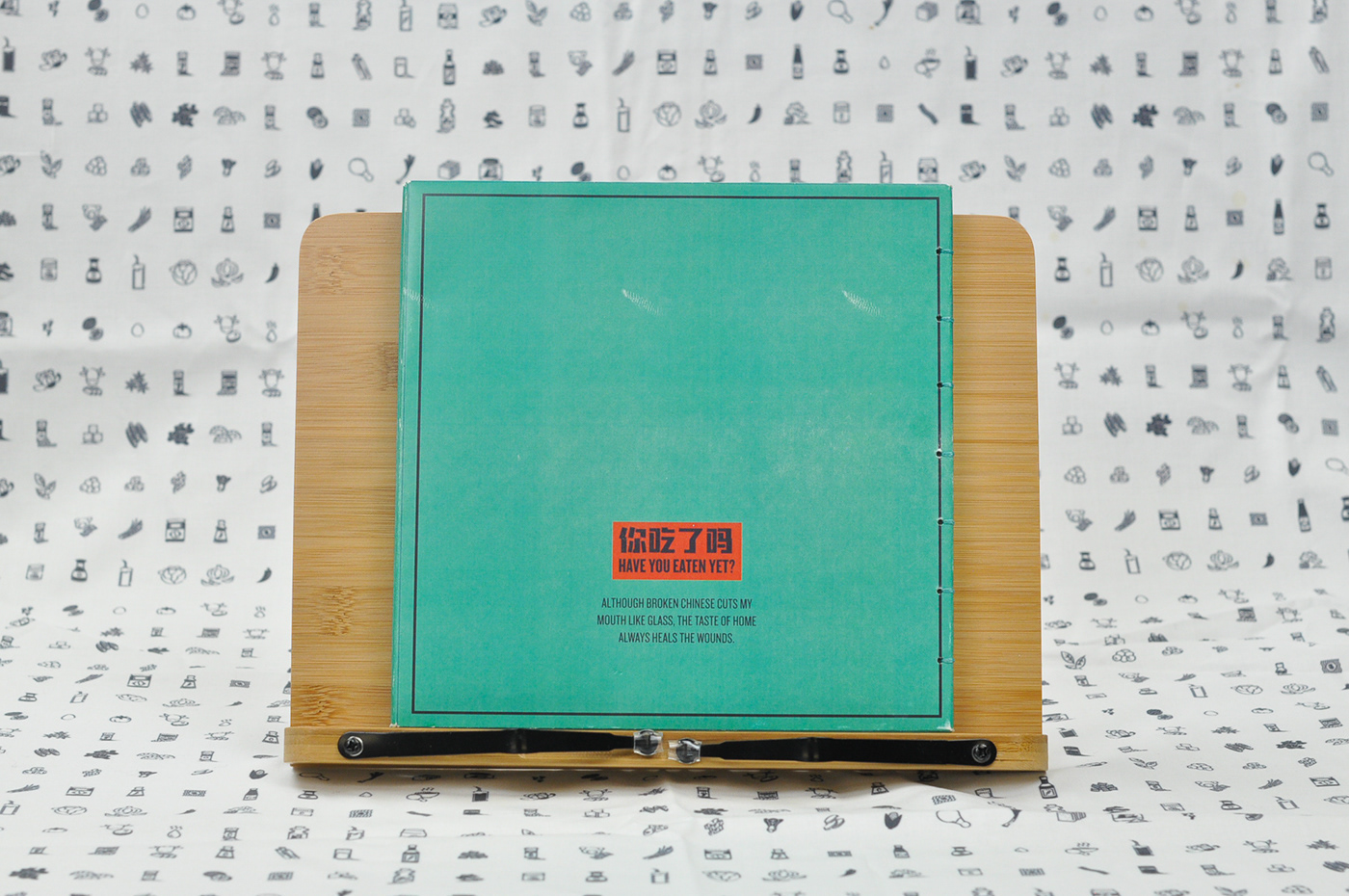
Illustrations
I created each recipe illustration using Procreate on my iPad Pro.
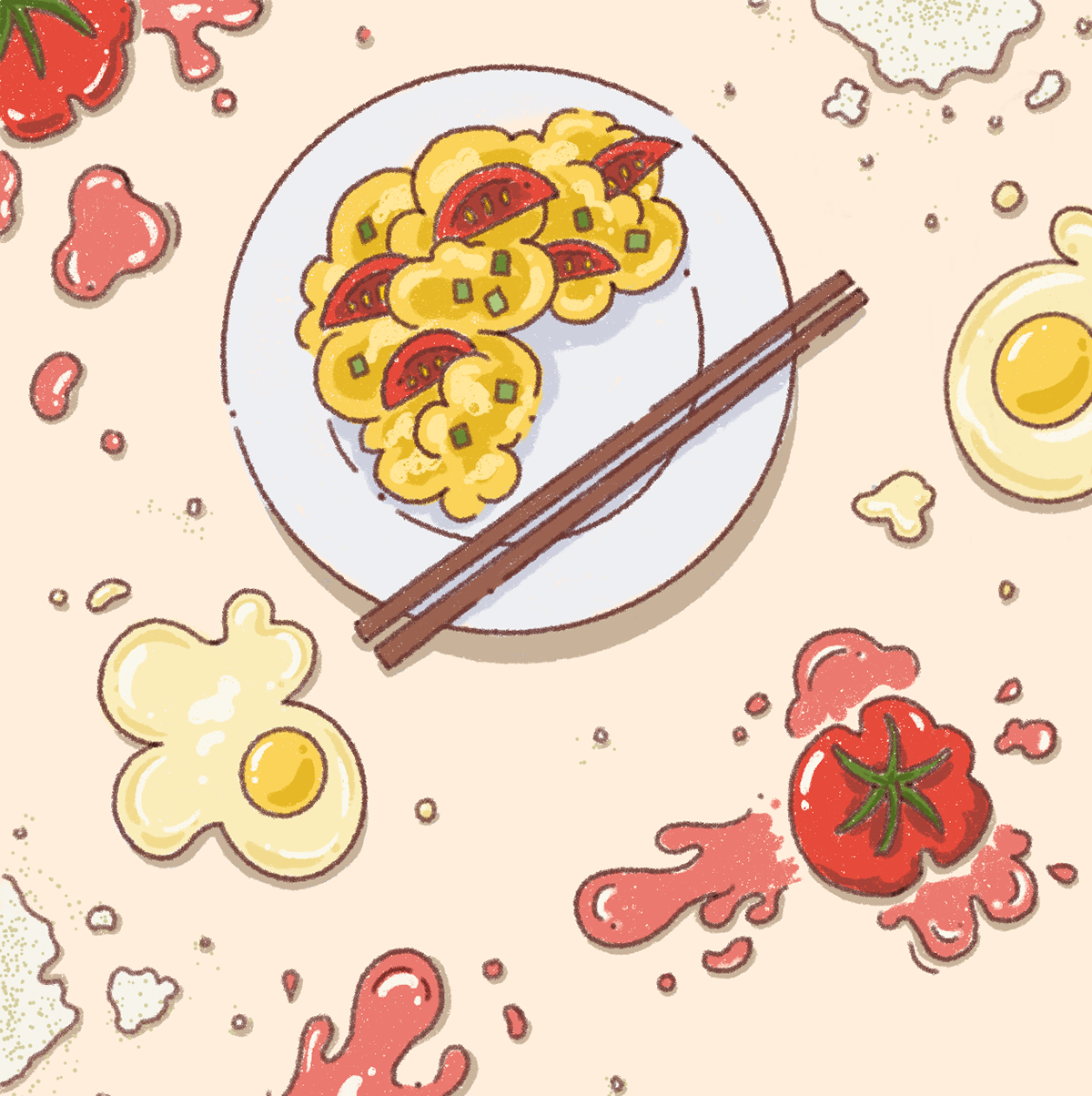

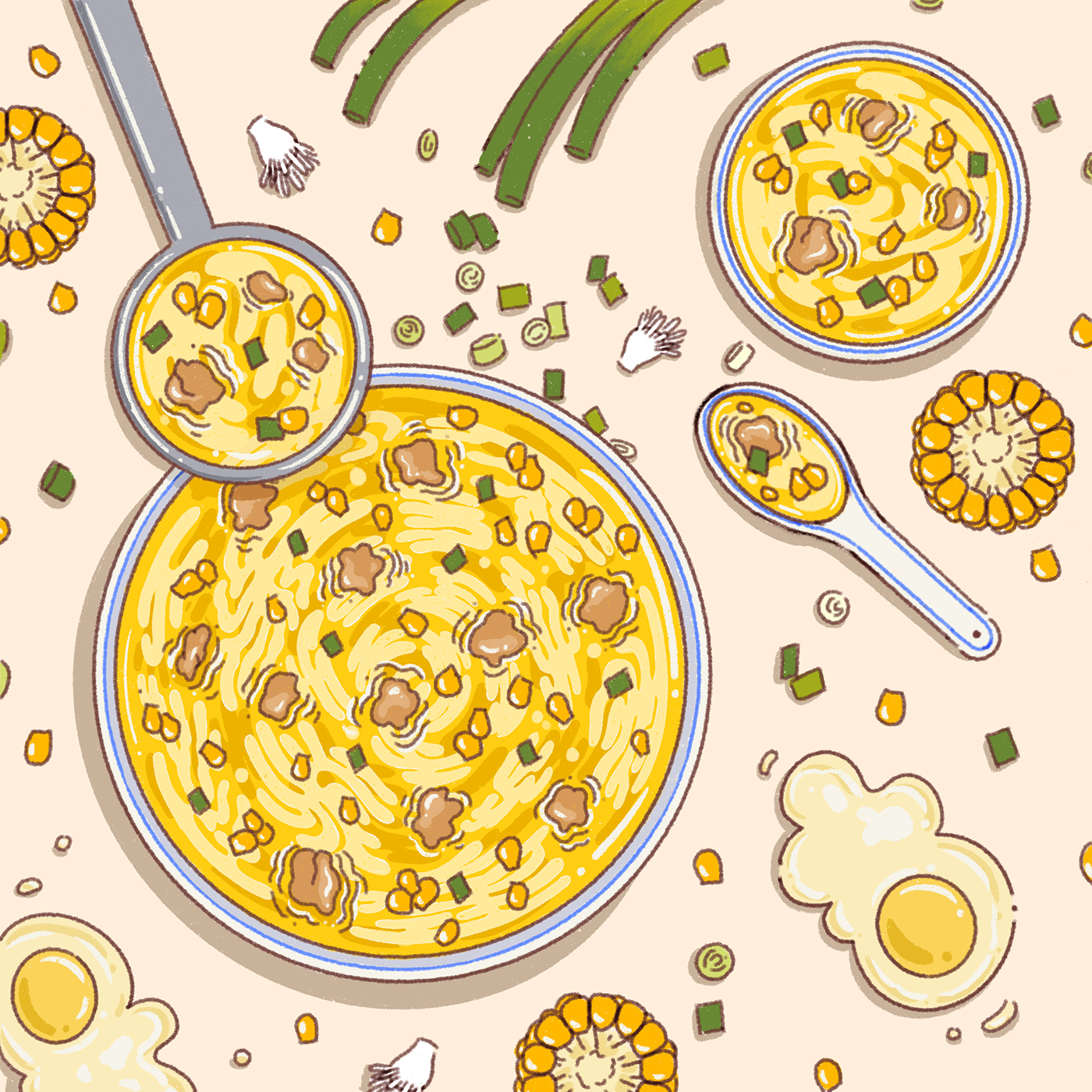






Part II: Comfort Food Quilt
As a second component partnered with the cookbook, I decided to create a quilt that serves as a literal metaphor for the term "comfort food" and how it can keep you warm and make you feel safe.
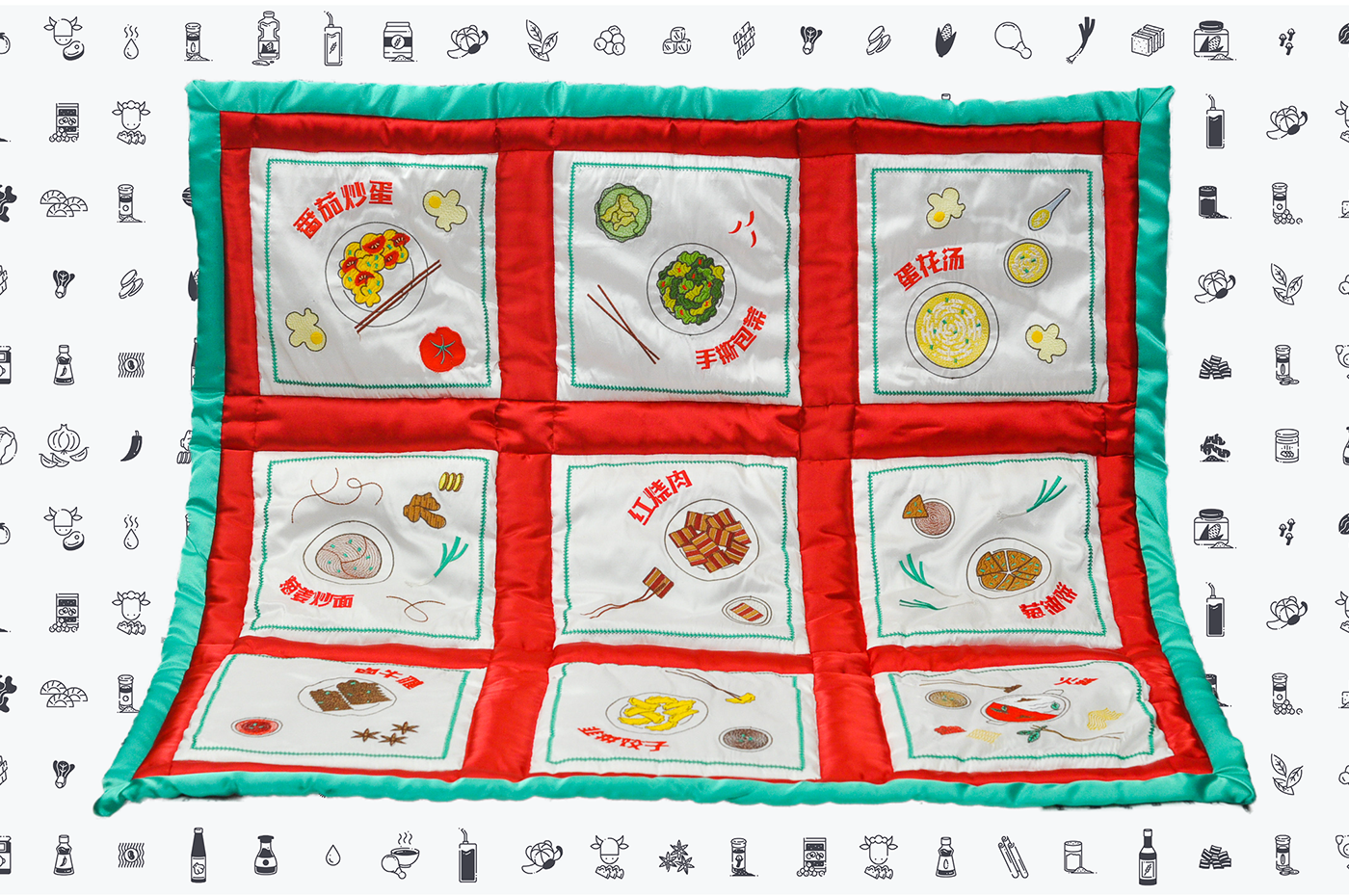






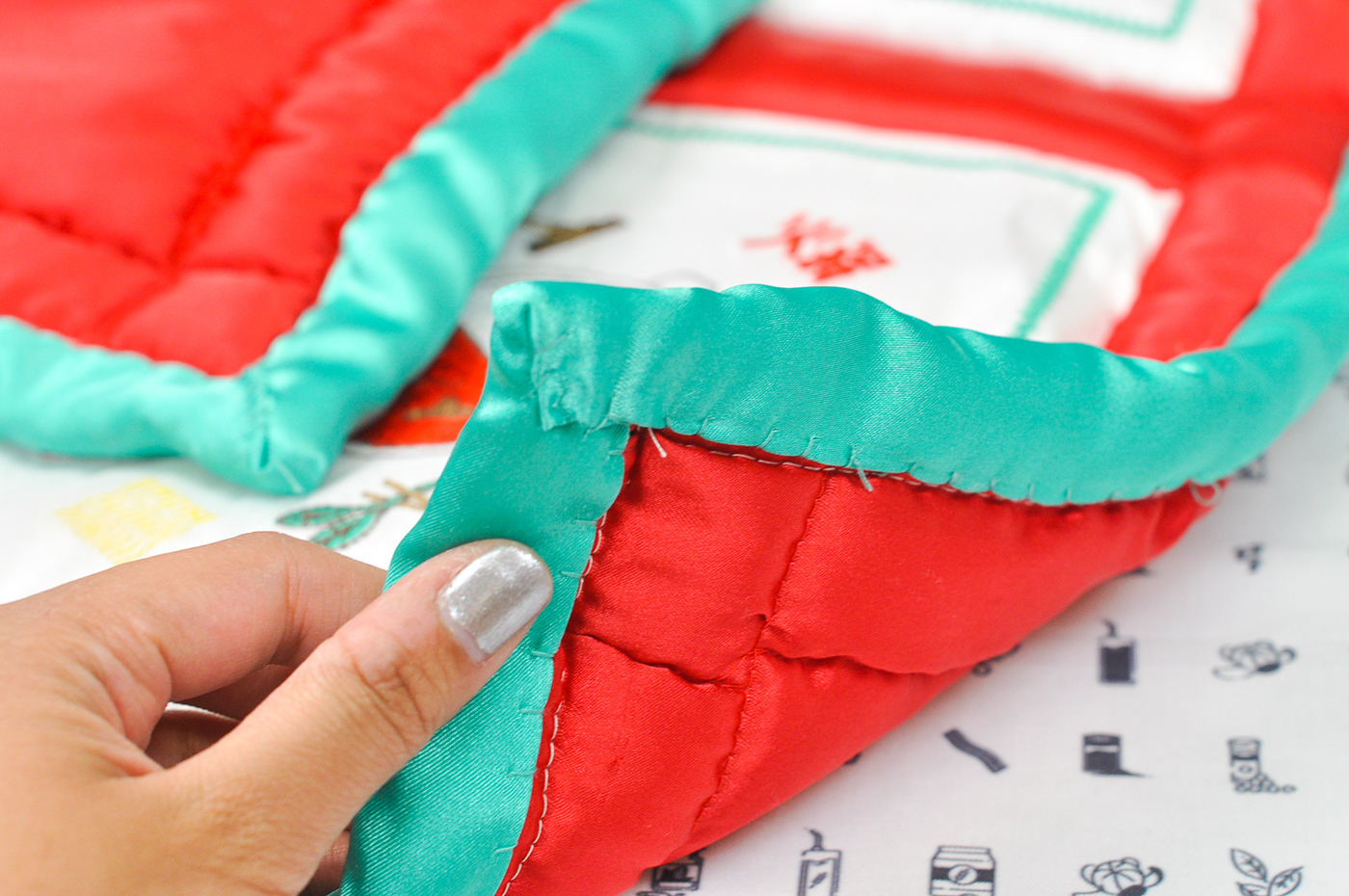
Part II: Comfort Food Quilt
My day-of presentation was set up in the Graphic Design commons. I set up a cozy corner with rugs, a coffee table, and a TV to present my keynote. I printed and bound 4 copies of my cookbook, laid my quilt on a pedestal, and cooked 4 out of the 9 recipes detailed in my book. Lastly, I had a tablecloth printed with the recipe icons I designed.


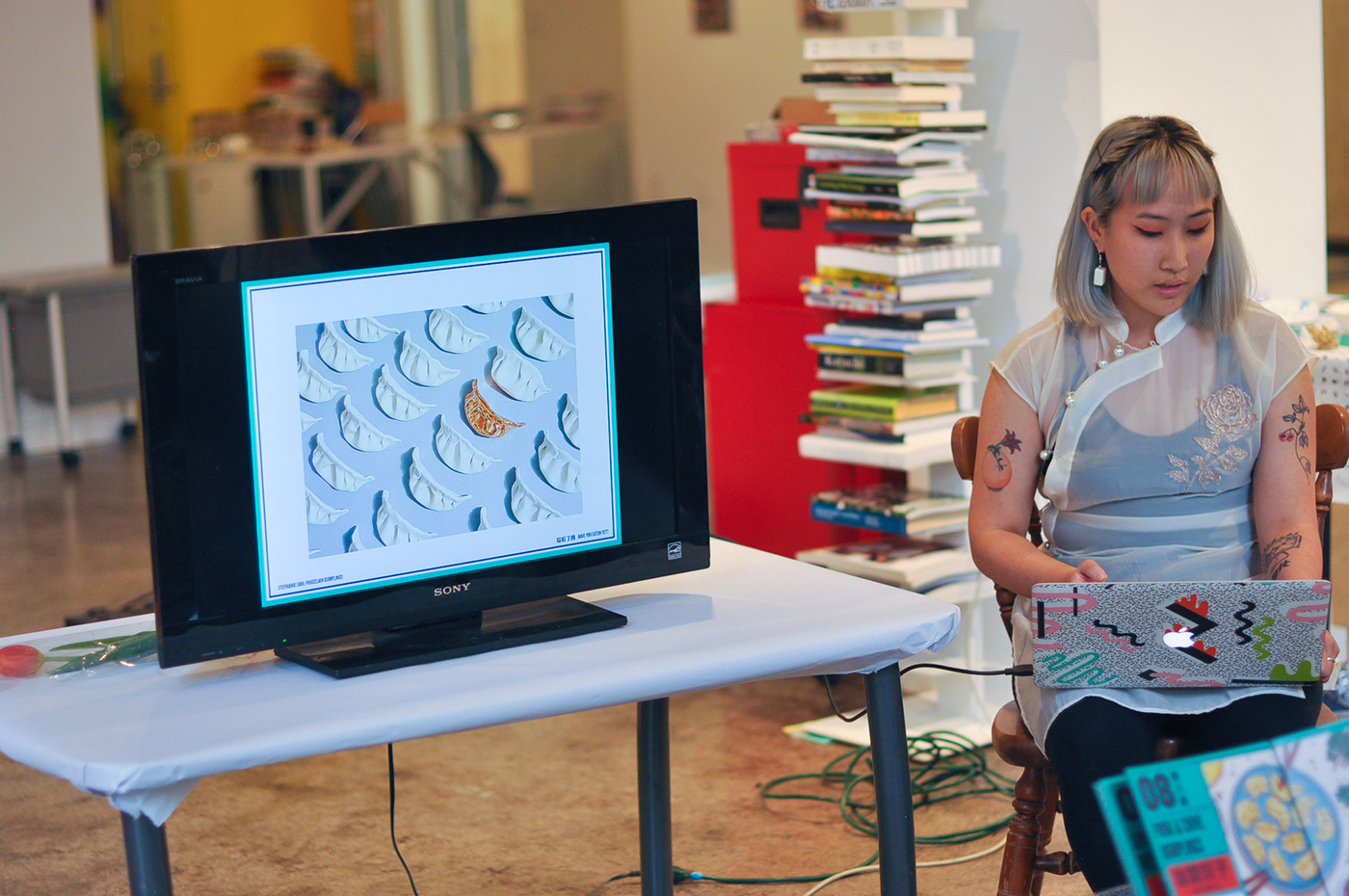
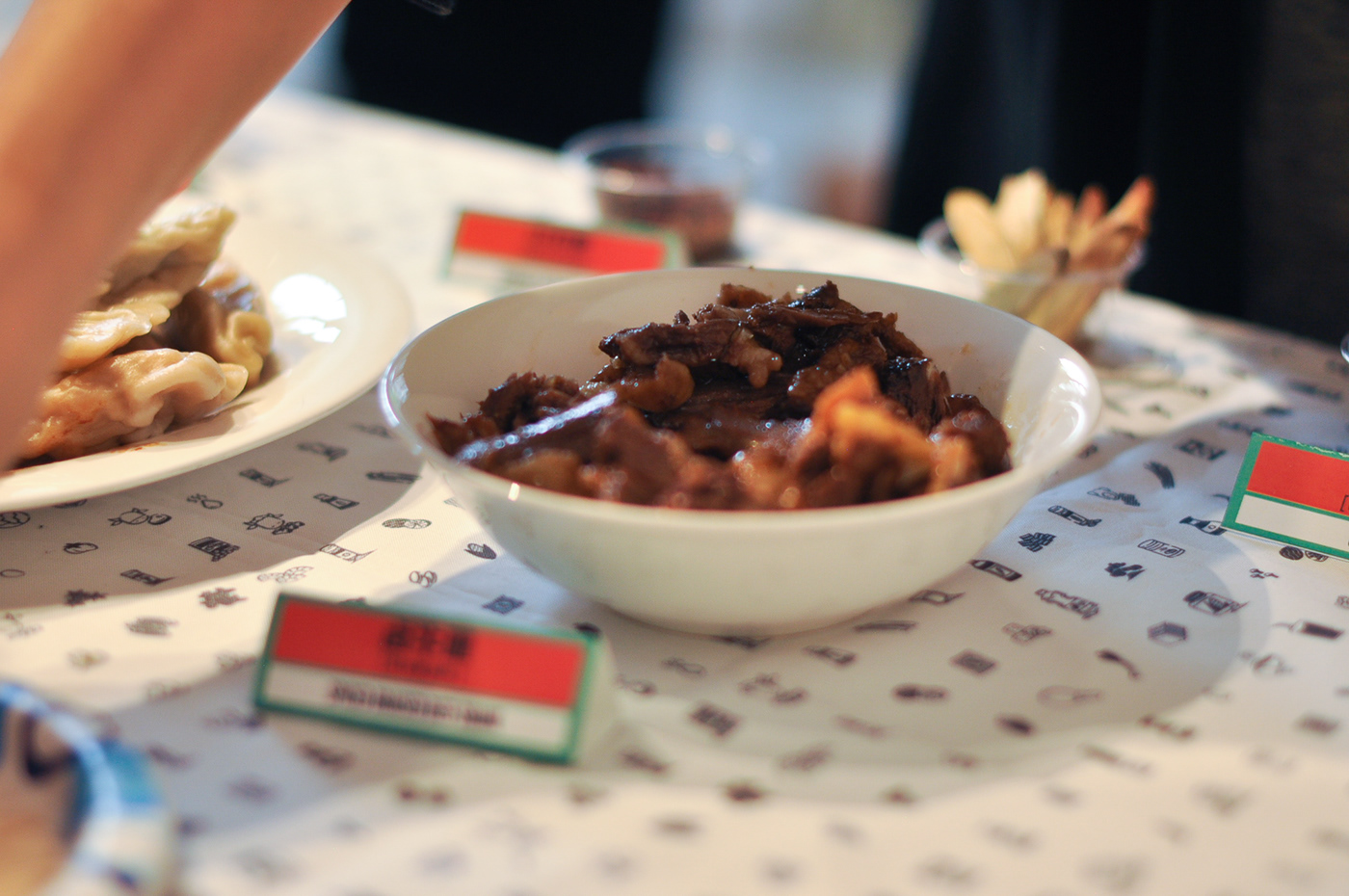


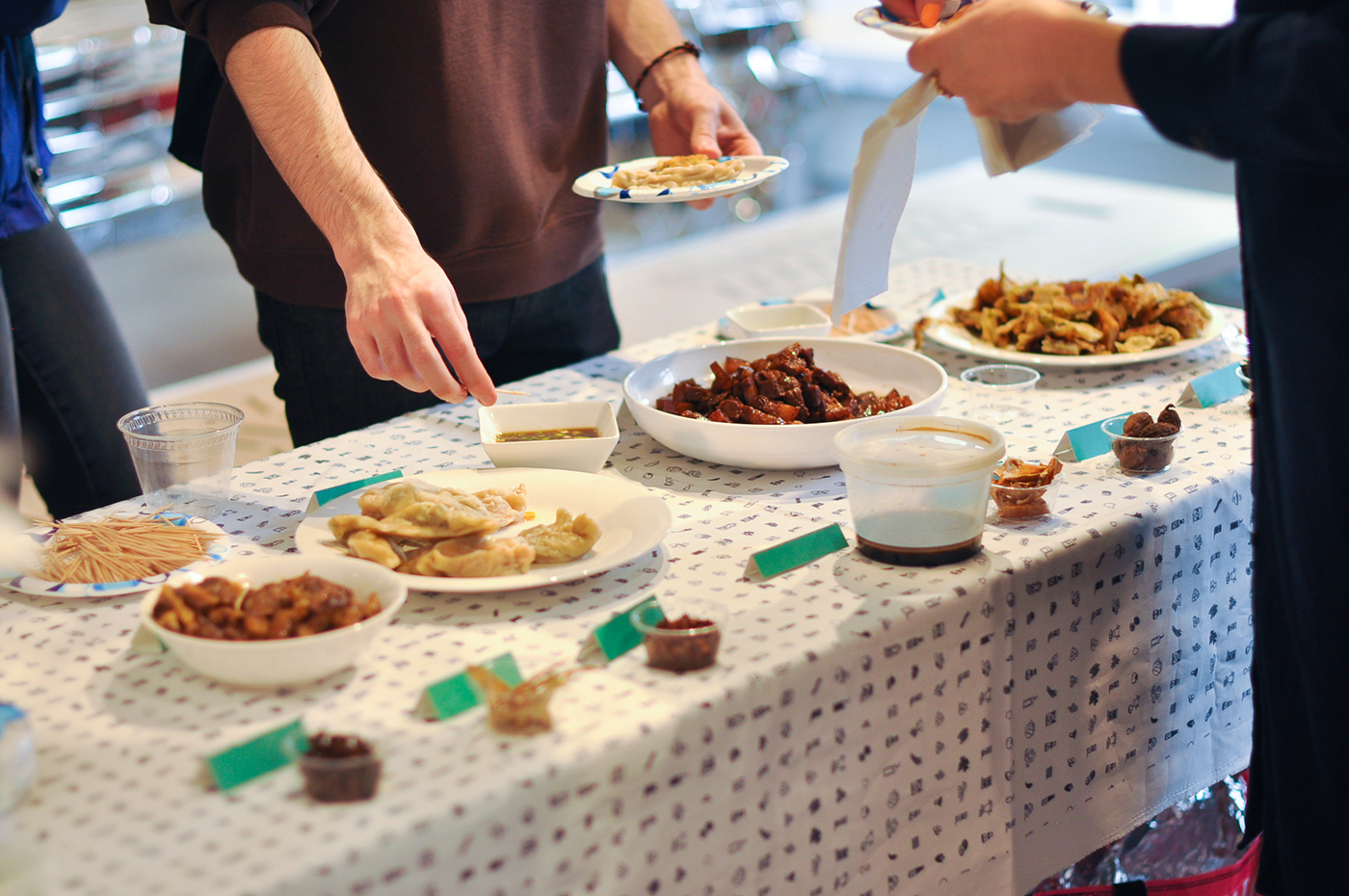
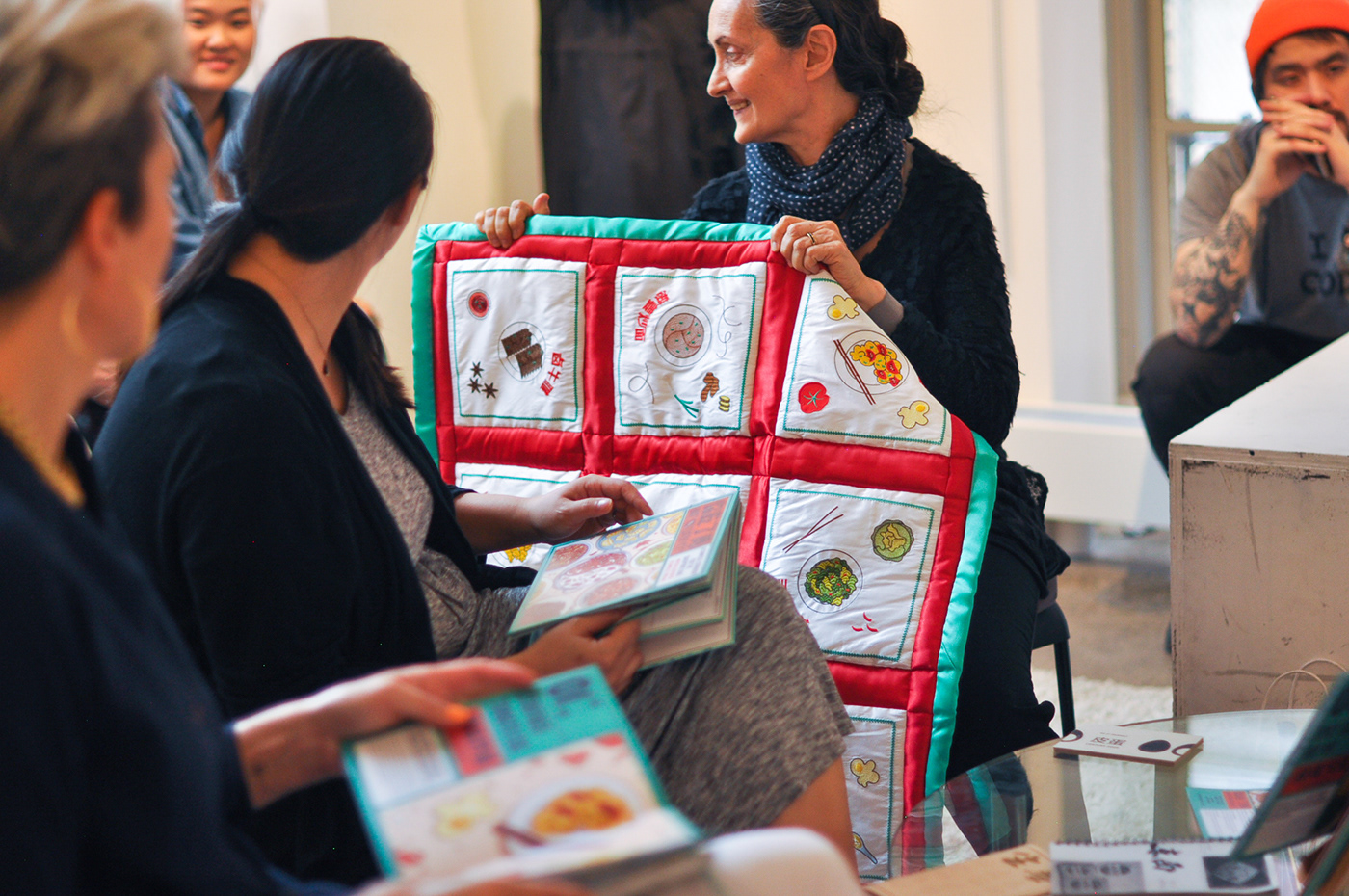
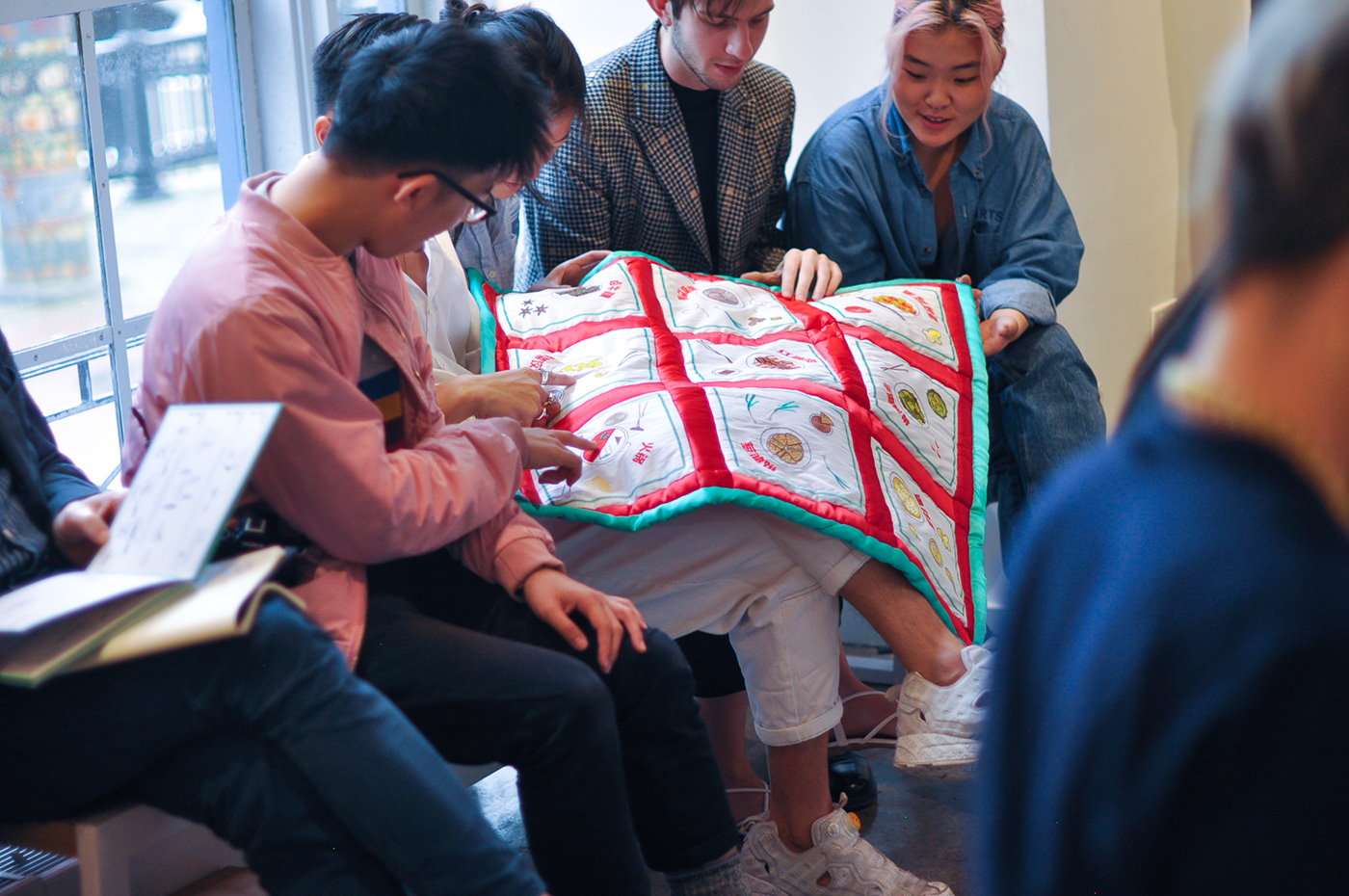
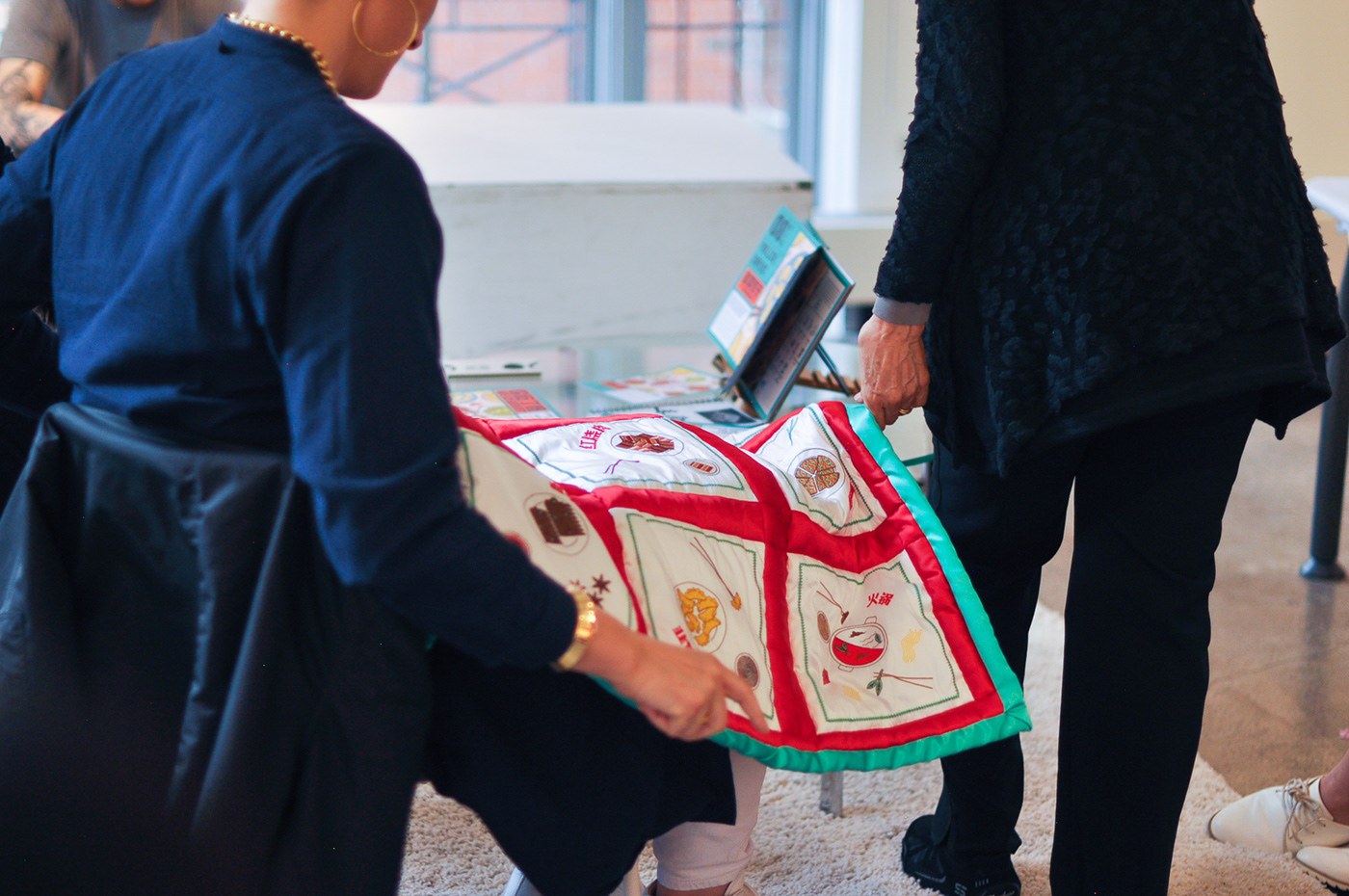
Process: Cookbook
For the cookbook, I wasn't sure at first what style and feel I was aiming for with the design. These are some aimless first tries - projects always start somewhere.
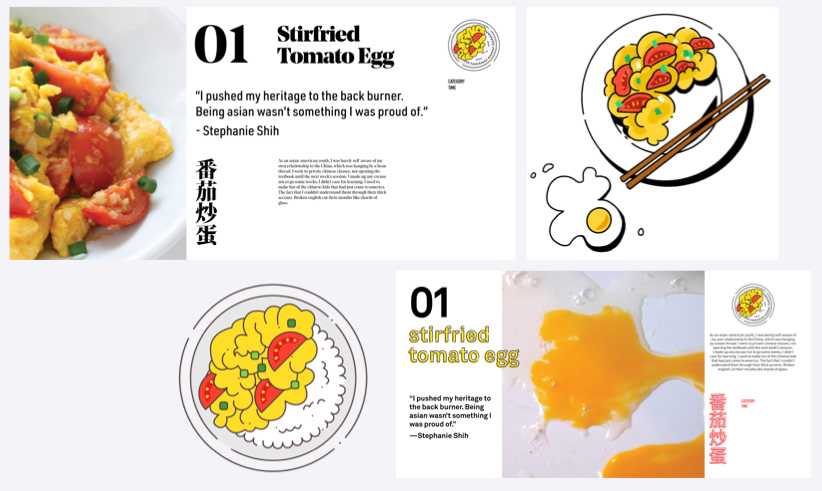
I took inspiration from illustrations I found online. In addition, I was contemplating the "self-care" and healing aspect of the cooking and learning process, and was inspired by Asian medicinal packaging; that jade green and compartmental style became an important aspect of my project.
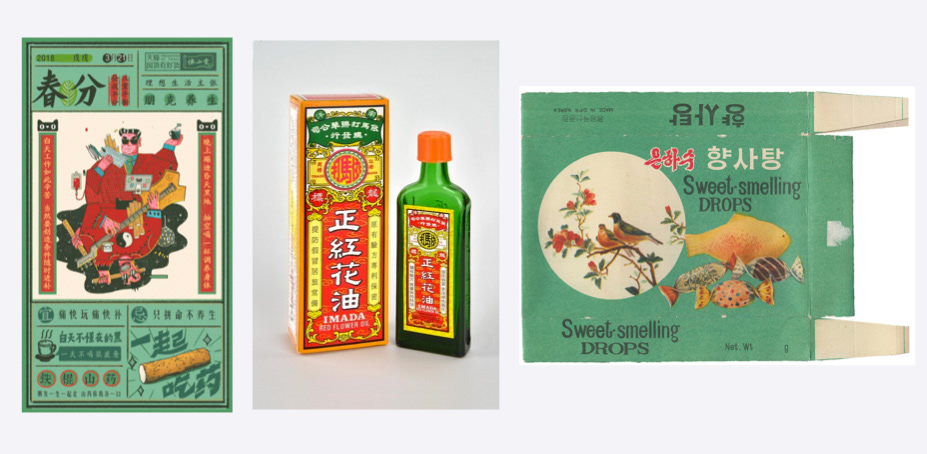
This is an example of one of my Procreate illustrations; all 9 were recorded and drawn the same way.
For each recipe, I wanted to create an IKEA manual to follow graphically. I noticed there was a design flaw in most cookbooks. There is a block in the flow of doing something physically and not seeing it visually, but instead reading about it. For example, the ingredients list may read, "1/4 tsp salt". You flip to the next page to see the steps of the recipe, and step 2 says, "add the salt to the bowl." Wait, how much salt was it again? You flip the pages back and forth and continuously lose your place. This problem was solved by adding the amounts necessary within the recipe on each step where it is required. Amounts were only included on the ingredient list where it was important (5 tomatoes; 10 stalks of scallions; etc).
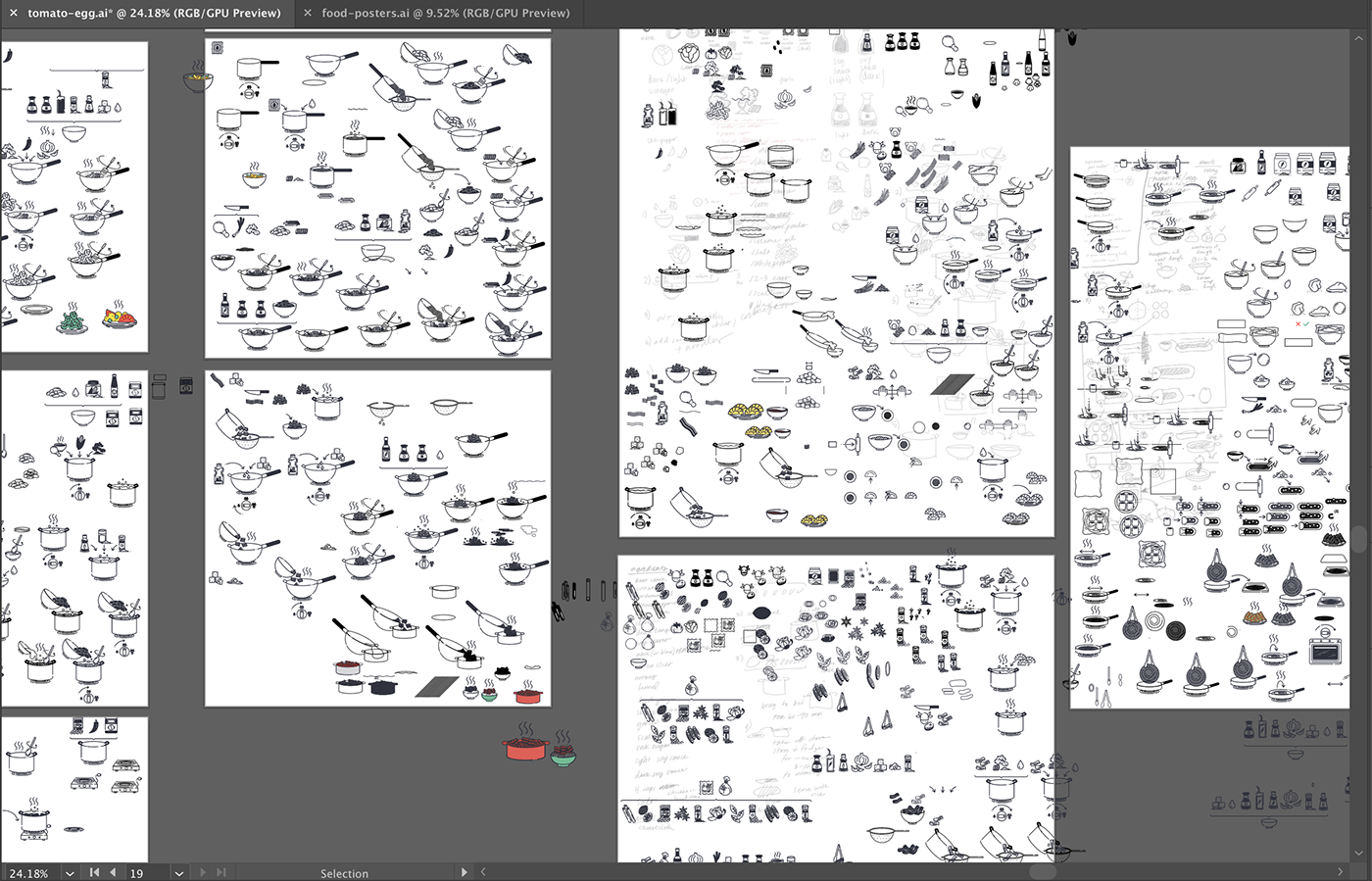
A testament to how far my family has been removed from our Chinese heritage is that I could not get any recipes passed down through my family. The sad reality for most of us is that we turn to the internet for recipes - I credit this family-run blog for all of my recipes! They were only slightly modified by my own tastes and preferences.
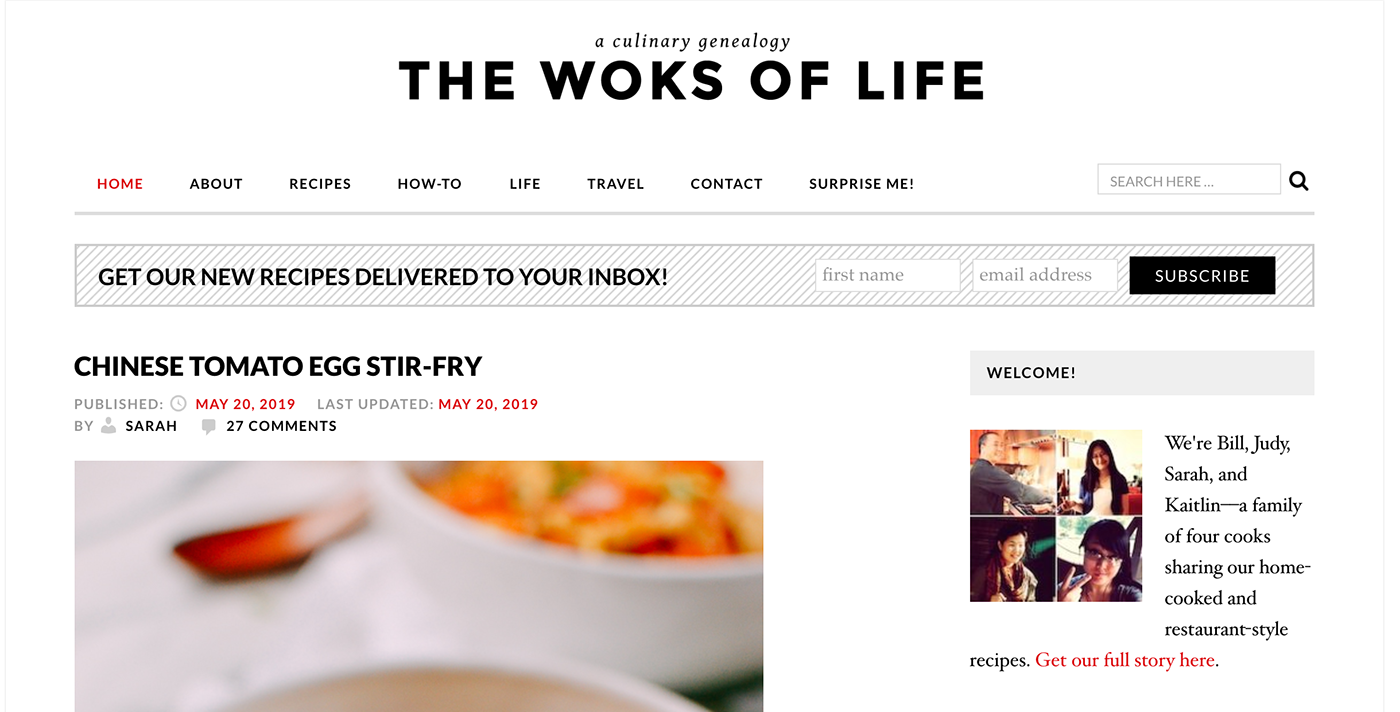
Process: Cookbook
As for the quilt, I took a class during wintersession called Digital Embroidery and begged the Textiles department to let me use their machine. These are some photos of the software, in which I imported Illustrator vector files.


This is a video of the Tajima embroidery machine at work.
Initial sew-outs.



Quilt sandwich being pinned together (top layer, backing, and batting in between).


Sewing together the quilt sandwich on a sewing machine.
Finally, sewing the jade green border onto the quilt by hand.

If you've made it this far in my project, thank you so much for reading and viewing!
